After the first snorkelling session where members of the group I was with in the Maldives were supposed to demonstrate their basic skills, we had a break which I used to go to the hotel reception to check on the progress regarding my room change. I was told that something would be arranged, but later, which suited me fine because we had another activity planned, a sports one. We had kayaks and stand-up paddleboards (SUP) at our disposal. I wasn’t interested in kayaking since I already knew how to do it and how to have fun with it (see: https://www.svudapodji.com/en/vietnam-7/).
So, I planned to try the other option – the stand-up paddleboard. I had never tried it before and, as I suspected, it was fun, but I didn’t manage to stand up. I have an excuse though - there were waves and a lot of jet skis passing by, further stirring up the water, plus there was also a current pulling me towards a shallow corner. When I fell while attempting to stand up, it turned out to be uncomfortably shallow and one could easily get hurt there. Then I got back on the board and knelt on it, but it was difficult to return to where I started due to the current and the waves. After several rather feeble attempts to return to the part of the beach where I started, I gave up and simply lay across the board, with the paddle underneath me. I found it much easier to “paddle” with my arms and then I quickly returned to where I wanted to be. That was enough sports activities for me.
Upon returning to the hotel, I settled into the new room and first took a photo of the view from the terrace. If I can’t sleep well at night, at least I can enjoy the nice view during the breaks.
 The same view basically, just from a little higher up
The same view basically, just from a little higher up
Then I rested for a short while, but I also felt hungry, so I decided to take a stroll around the settlement first.
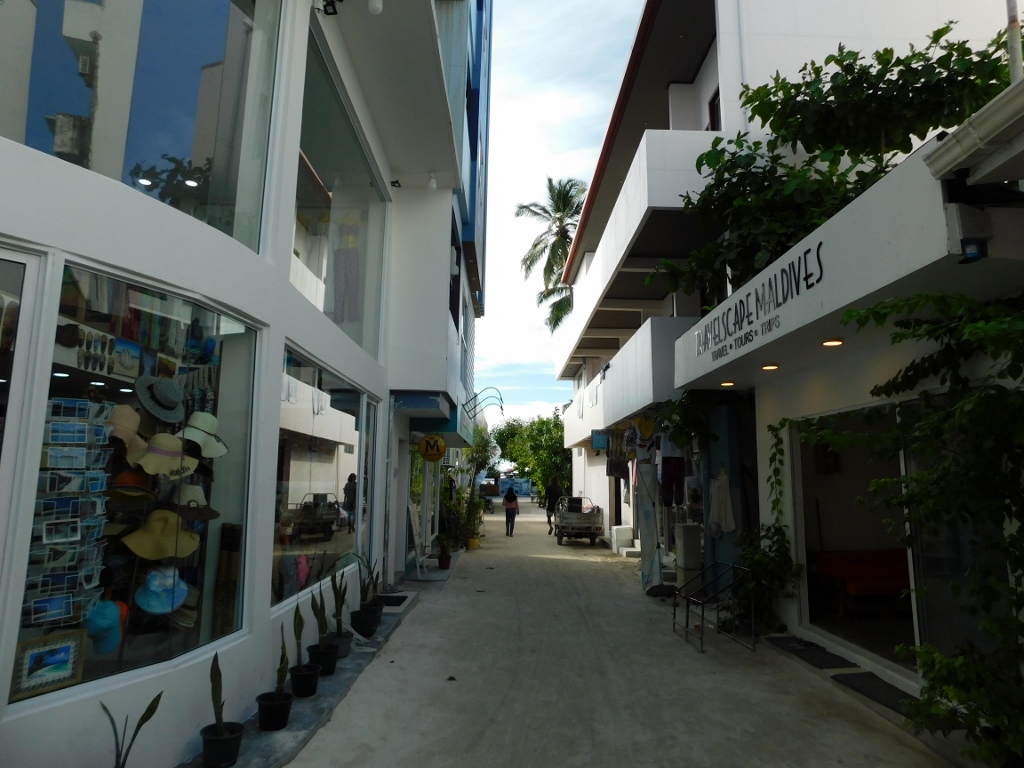 Settlement on the island of Maafushi, a detail
Settlement on the island of Maafushi, a detail
There isn’t much to see there, as a good portion is dedicated to tourism, but as I’ve mentioned earlier, Maafushi is a continuously inhabited island and the local population regularly go about their business there.
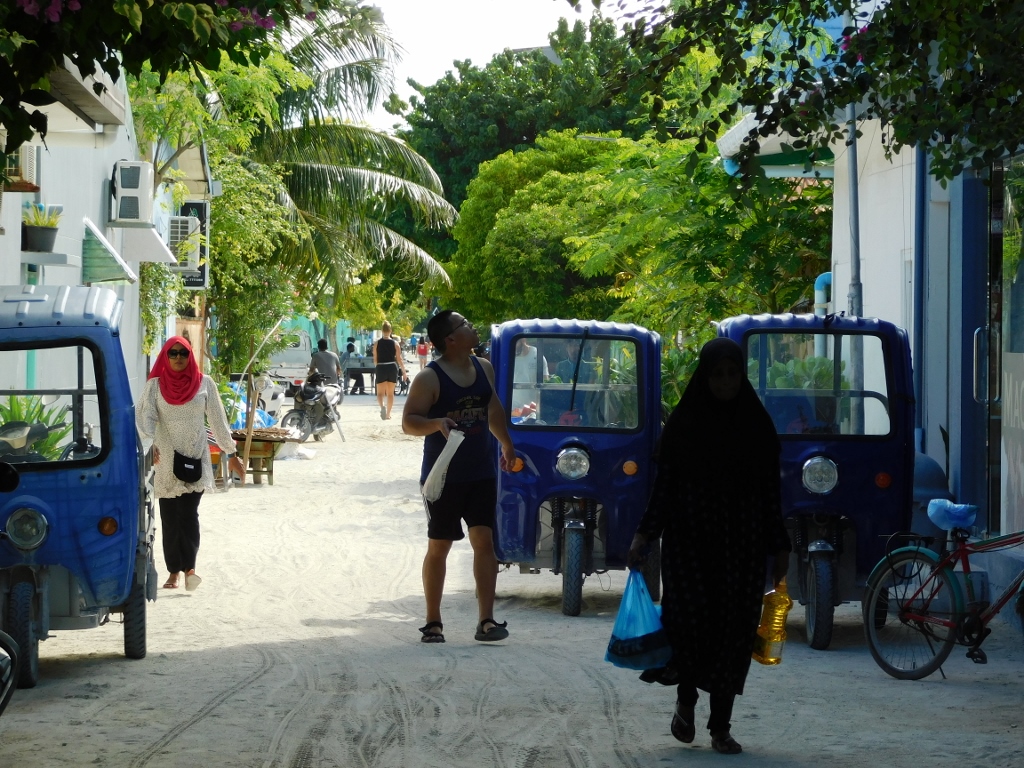 Settlement on the island of Maafushi, a detail
Settlement on the island of Maafushi, a detail
The islands in the Maldives are made of sand, making it very difficult to cultivate anything, so tourism is the main source of income for the Maldives. However, I must admit I was surprised when in one restaurant I saw that the salt placed on the table was imported from Australia! If anyone could have a huge production of sea salt, it would be the Maldives. But I guess tourism brings in big money, so who would bother with producing salt from seawater.
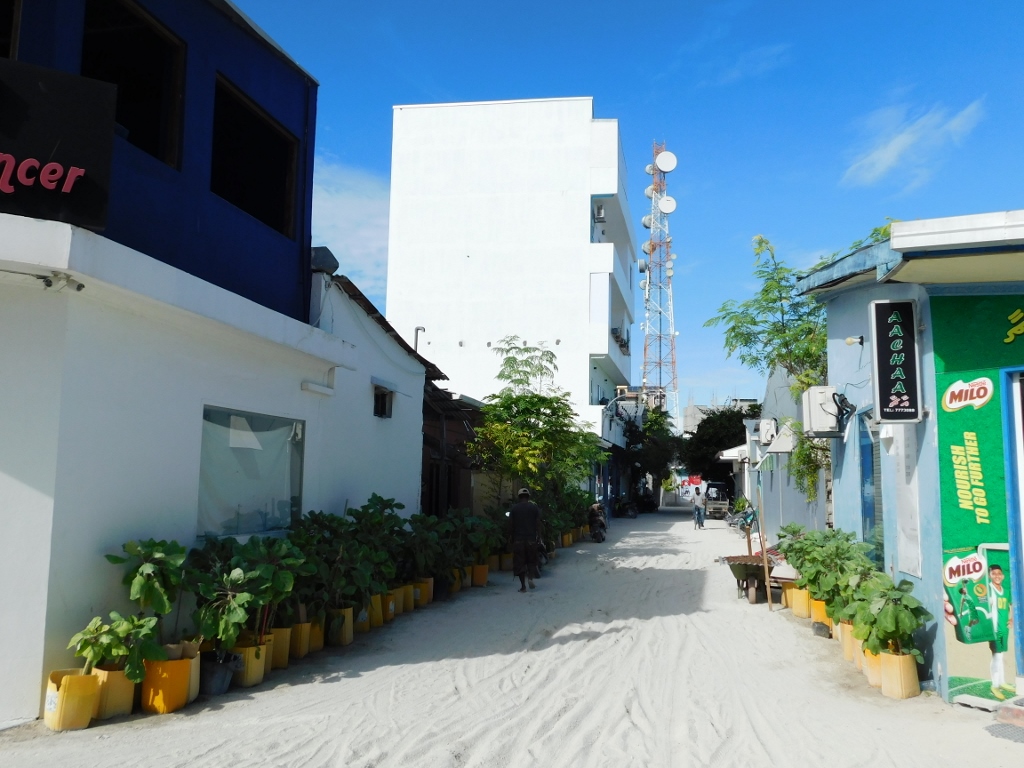 Settlement on the island of Maafushi, a detail
Settlement on the island of Maafushi, a detail
I have already mentioned that the inhabitants of the Maldives are 100% Muslims, so here on Maafushi, there are a few mosques as well.
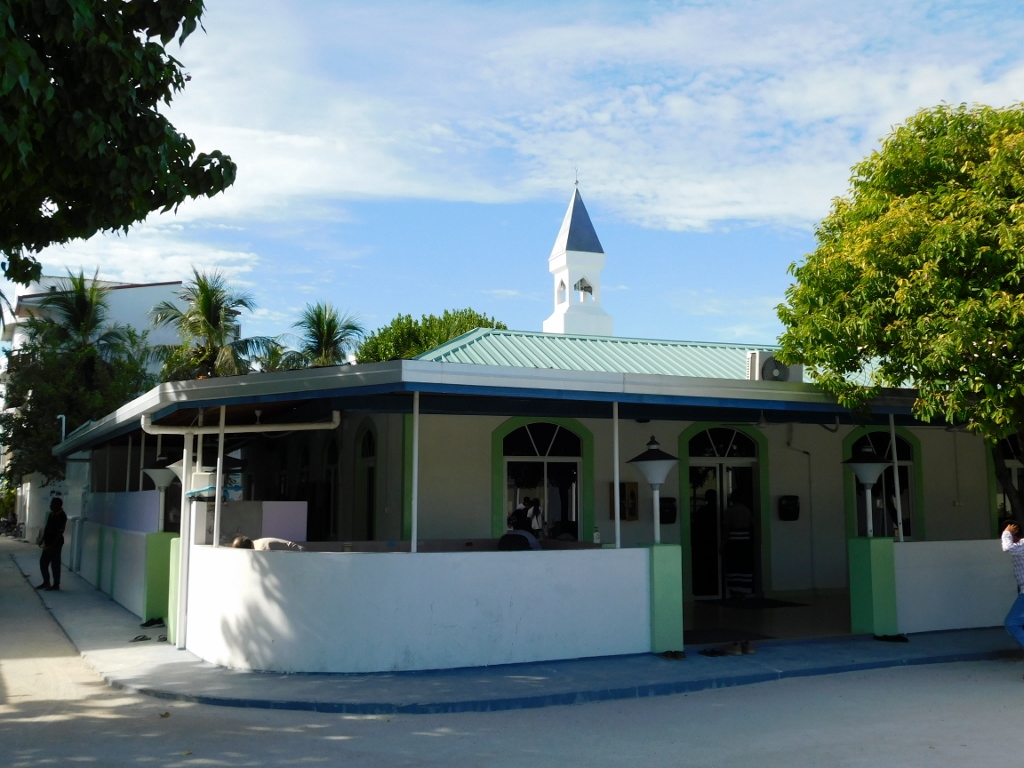 Settlement on the island of Maafushi, a detail
Settlement on the island of Maafushi, a detail
Near the mosque seen in the photo above, there is also a school and I particularly liked that on the porch, presumably for parents waiting to pick up their children, there were boards displaying wise sayings. There can never be too much wisdom and intelligence for humankind.
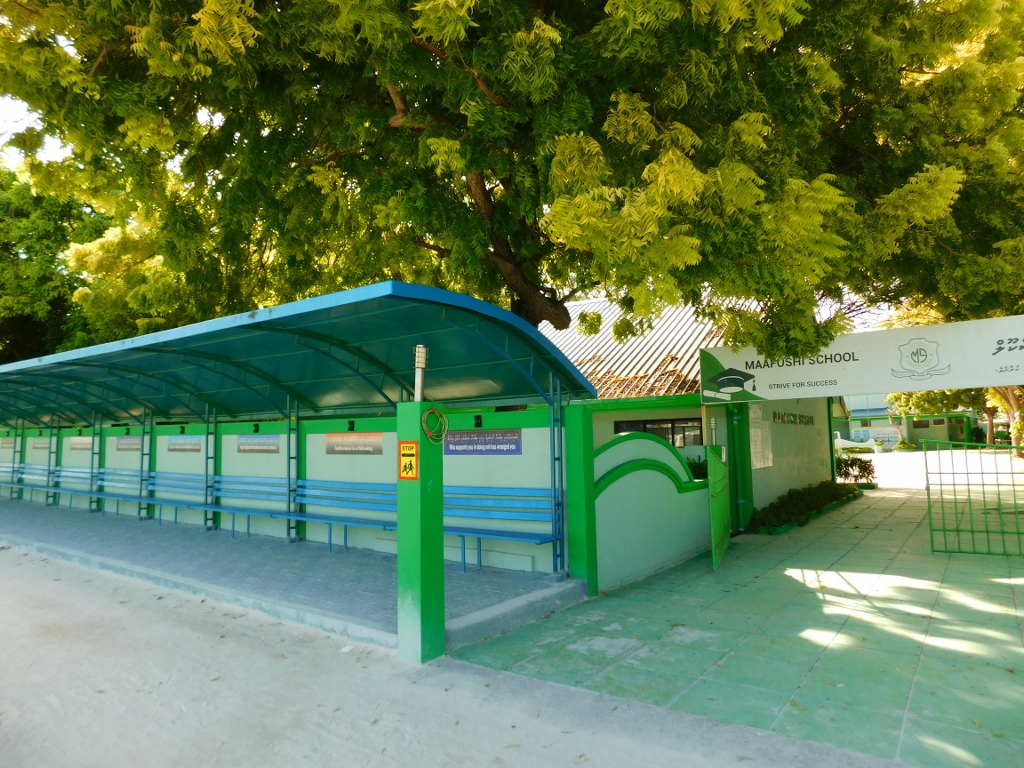 Settlement on the island of Maafushi, a detail
Settlement on the island of Maafushi, a detail
I also went to that beach where we went snorkelling earlier and there I noticed a beautiful grey heron (Ardea cinerea).
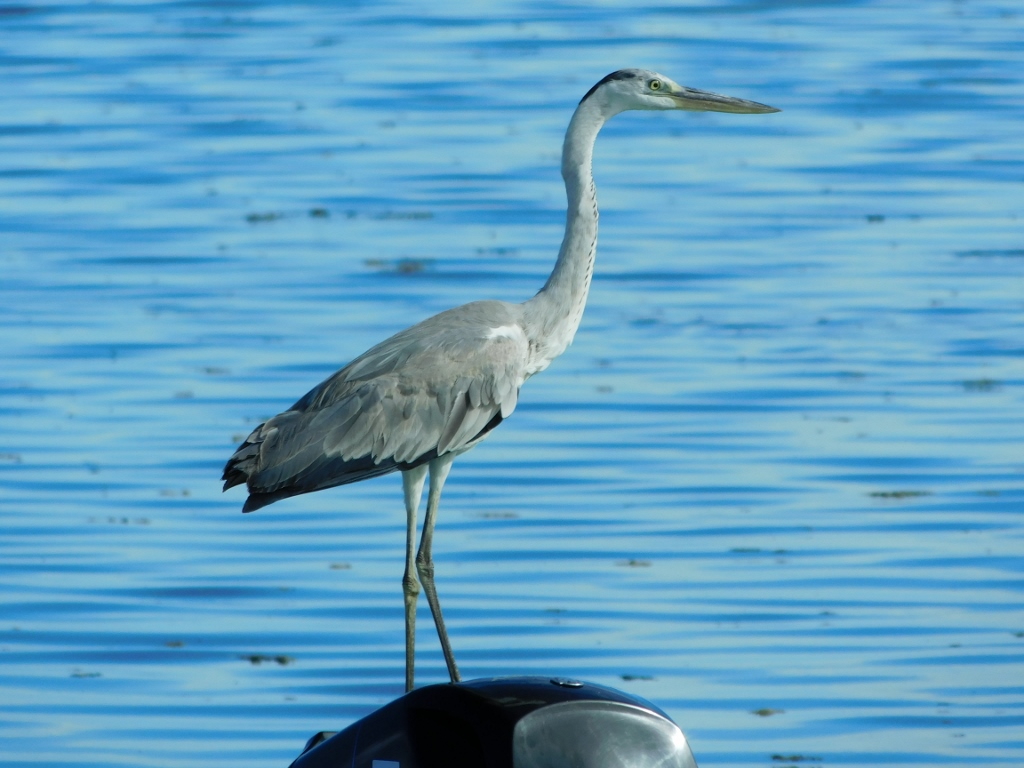 Grey heron
Grey heron
Along the way, I bought a couple of small things and then went for a light lunch. After doing all of that and bringing those items back to the room, it was time to head down to the hotel beach where I enjoyed a wonderful swim.
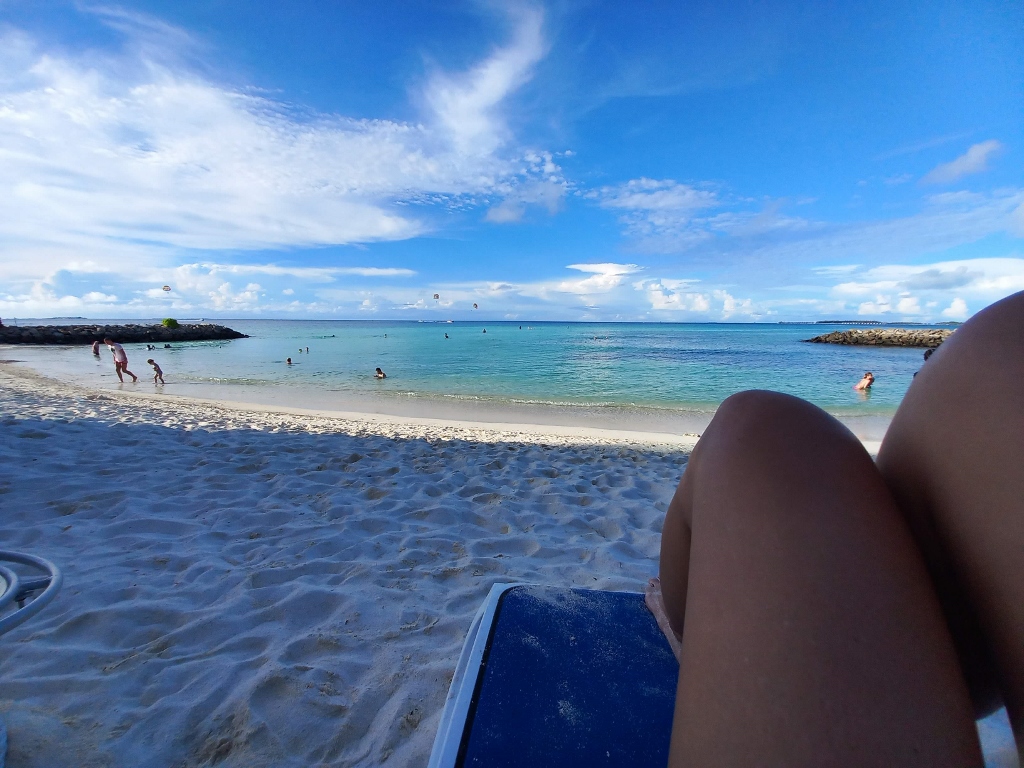 Enjoying the hotel’s bikini-beach
Enjoying the hotel’s bikini-beach
For a while, I even had a very pleasant time socialising with a few people from the group and when the sun was almost setting, I went to my room to wash my hair and read a bit on the balcony because, after all, I was on vacation.
After dinner, I retreated to my room again. There was live music again tonight, but it seemed a bit less noisy, so I could sleep early since I could barely keep my eyes open. I guess I hadn’t swum as much as I did on that day for quite a while, so I got tired. I figured I would have to work on my swimming fitness a bit these days.
The very next morning, we went on our first excursion off the island where we were stationed, so as a group, we first gathered at the reception and then the other members went to rent diving equipment since I had already brought mine from home.
Then we walked to the pier where we had disembarked upon our arrival from the airport and now we were departing from there on a speedboat excursion. In order to go through the village, although everything is absolutely dedicated to tourism, it is necessary to be “decently” dressed – i.e., no walking around in swimwear. This applies to both men and women. I was already wearing my long-sleeved swimming shirt, so that wasn’t a problem for me. I also brought some large shorts specifically for swimming (they dry quickly), so I was fully prepared.
First, we headed towards the private island of Biyadhoo, which, like Maafushi, belongs to the South Malé Atoll. This means that there are many deep parts of the ocean, but also very shallow ones. This is immediately apparent from the colour of the water.
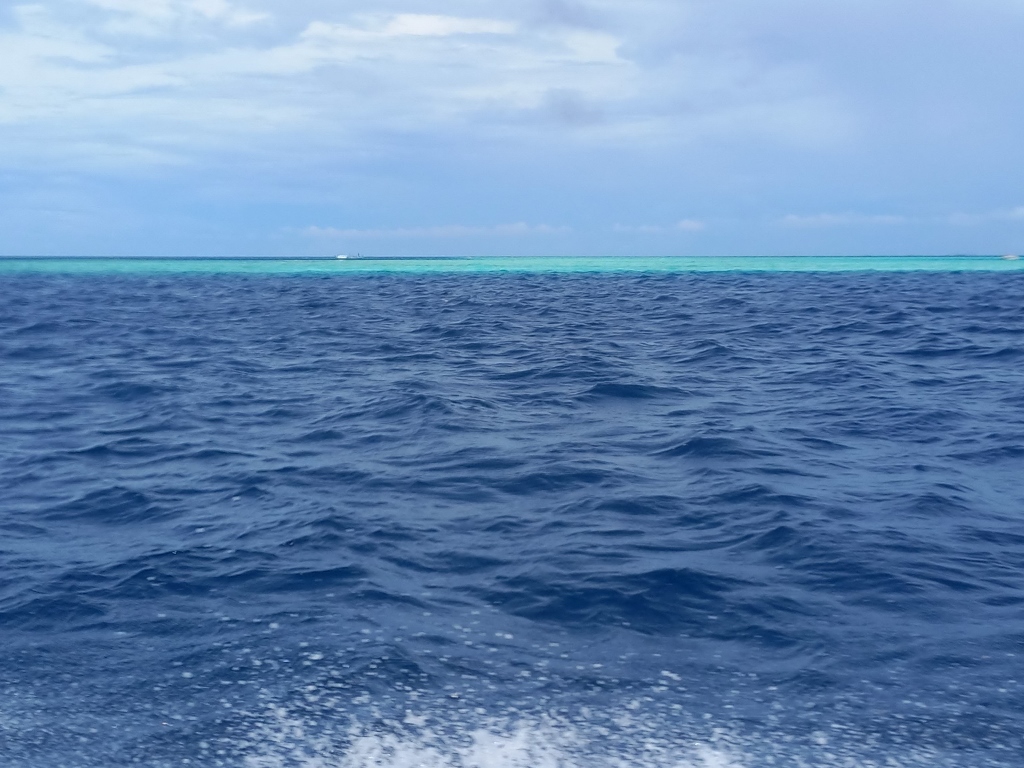 Indian Ocean in the Maldives
Indian Ocean in the Maldives
Along the way, we briefly stopped at one point because we encountered a school of dolphins, but they could only be seen surfacing occasionally, so my recordings didn’t turn out interesting at all.
Soon after, we arrived at the island of Biyadhoo, which, as I’ve mentioned, is private and it is not allowed to go ashore, but it’s apparently okay to snorkel in a part of the coral reef surrounding the island. Namely, people come here to watch sea turtles in their natural habitat.
 Biyadhoo island
Biyadhoo island
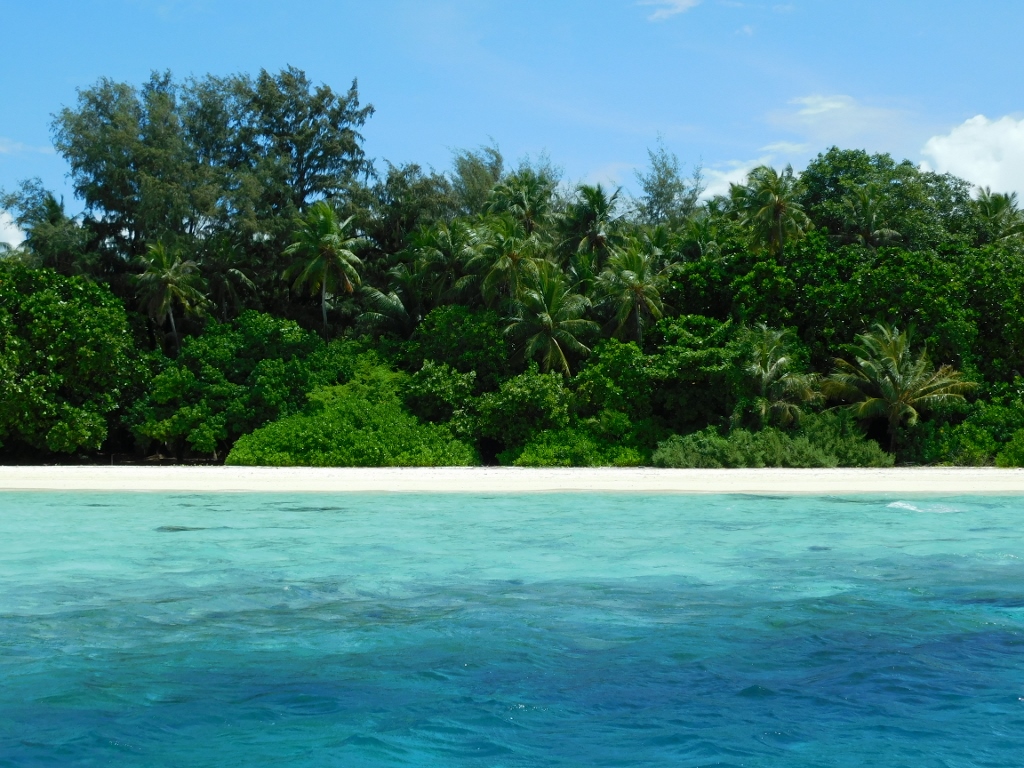 Biyadhoo island
Biyadhoo island
When tourist boats arrive here, the crew members first jump into the water and pull out ropes in order to tie them to designated spots. The reason for this is that it is forbidden to anchor in order to avoid damaging the coral. The fact that corals are being destroyed due to excessive boat and jet ski rides, tourists stepping on corals even though they are warned not to do so, and I’m sure there are other ways people destroy corals – all of that doesn’t matter.
So, when the boat was safely “anchored,” we jumped into the water. This was a deeper part and then we swam very close to the shallow part of the coral reef, although even right by the boat, there were plenty of fish to see.
This time, I brought my mobile phone in a waterproof case intended for underwater filming. I had already tried this during a few trips before and it didn’t work well, but now I was ready to give underwater filming another try. It was definitely significantly better than before, but that’s because I had learned the basics in the meantime. Although I occasionally still had issues that I somehow managed to partially overcome and I wasn’t sure why they were happening, I concluded that there must be “advanced courses” for using these cases. Still, I don’t think it turned out too bad for a first “successful” attempt.
We started swimming with the local guide who obviously knew where the turtles come to graze on the grass, so we soon came across one. Although there may have been a couple of them, I think I filmed only one and I did that multiple times.
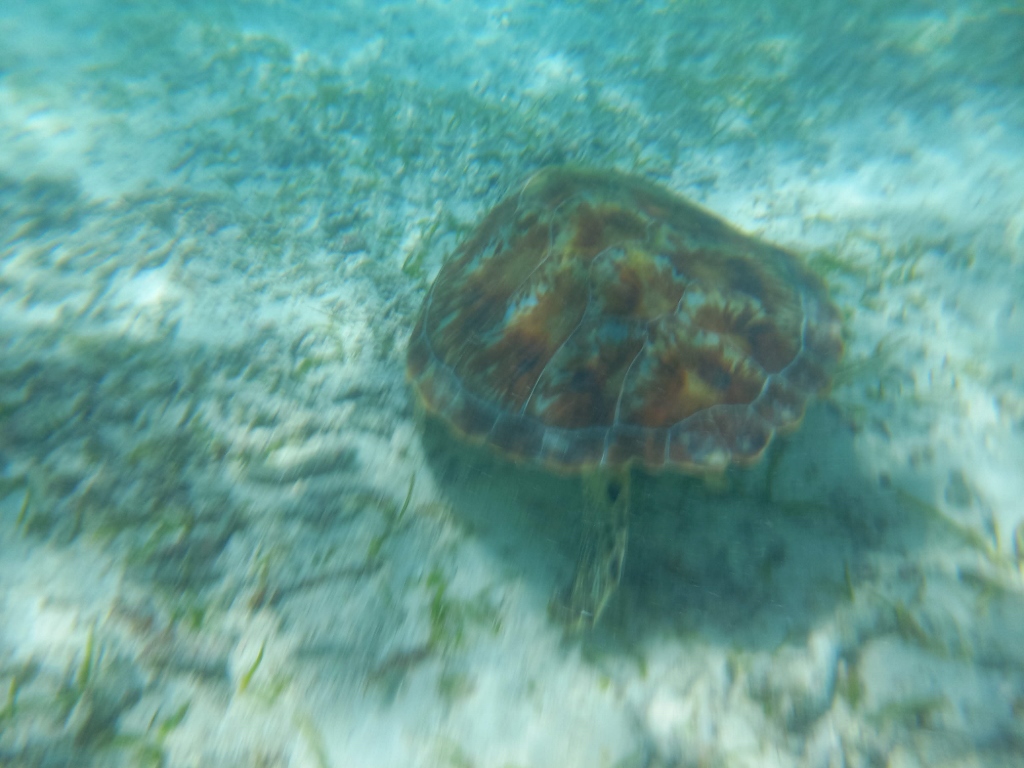 Sea turtle by Biyadhoo island
Sea turtle by Biyadhoo island
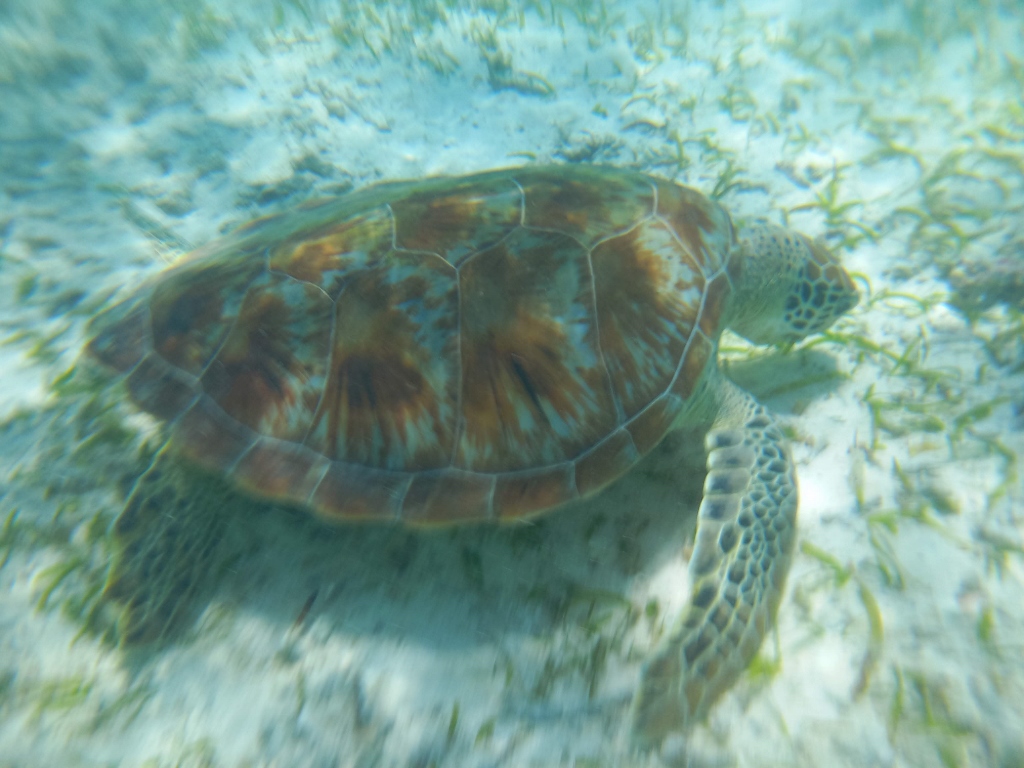 Sea turtle by Biyadhoo island
Sea turtle by Biyadhoo island
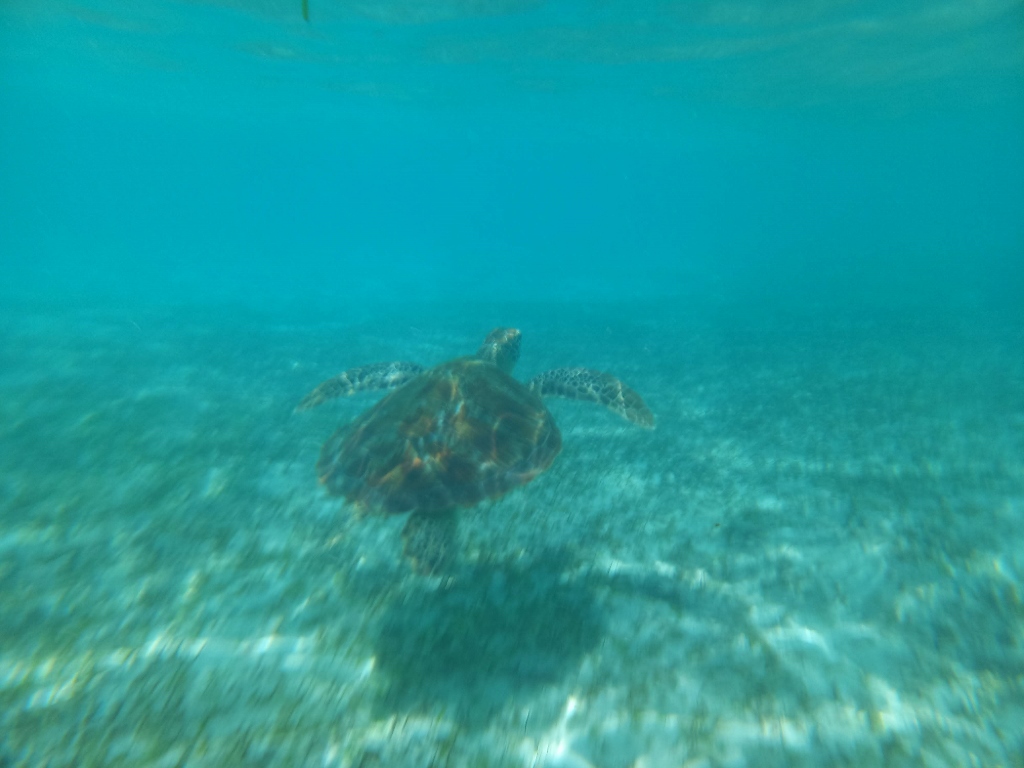 Sea turtle by Biyadhoo island
Sea turtle by Biyadhoo island
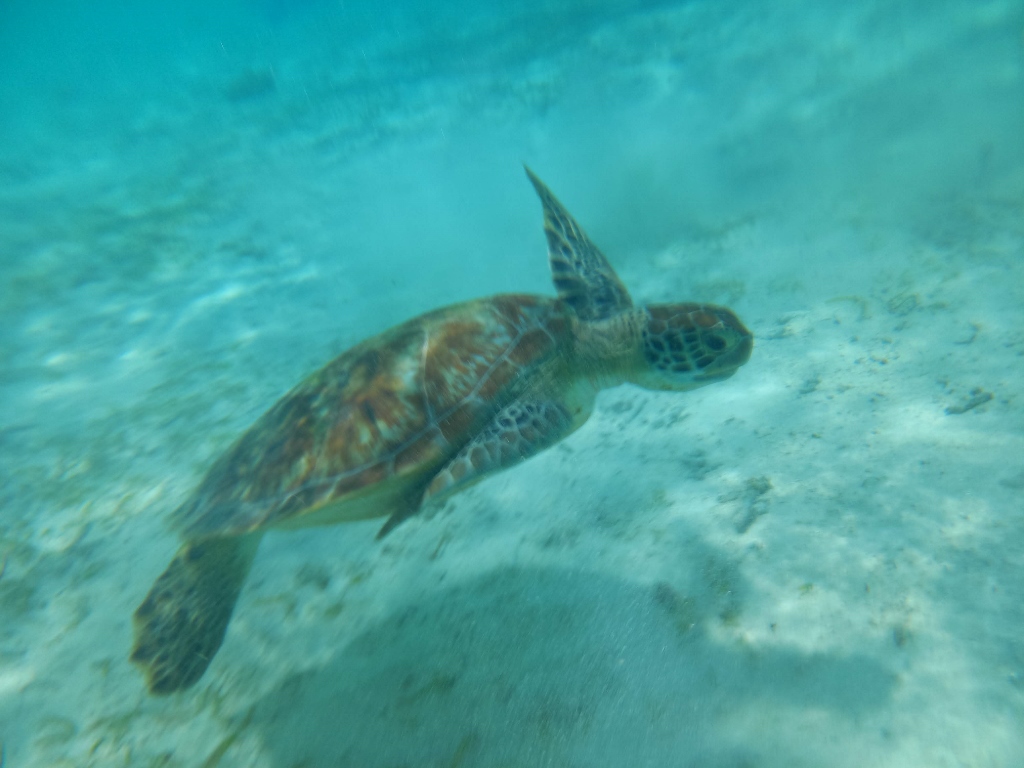 Sea turtle by Biyadhoo island
Sea turtle by Biyadhoo island
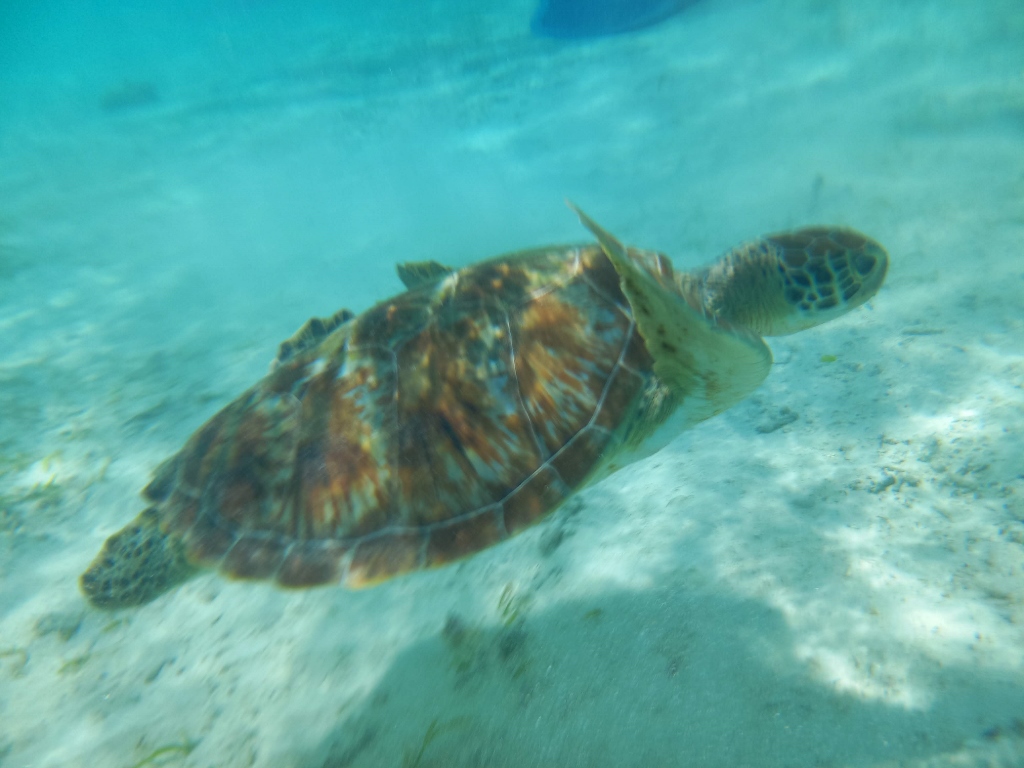 Sea turtle by Biyadhoo island
Sea turtle by Biyadhoo island
I also think my phone works underwater much better when filming in video format – the image is sharper. In any case, I was satisfied in the end.
When I finished filming the turtle, I started to swim slowly back towards the boat. I liked swimming on my back while filming myself and the surroundings with my mobile phone.
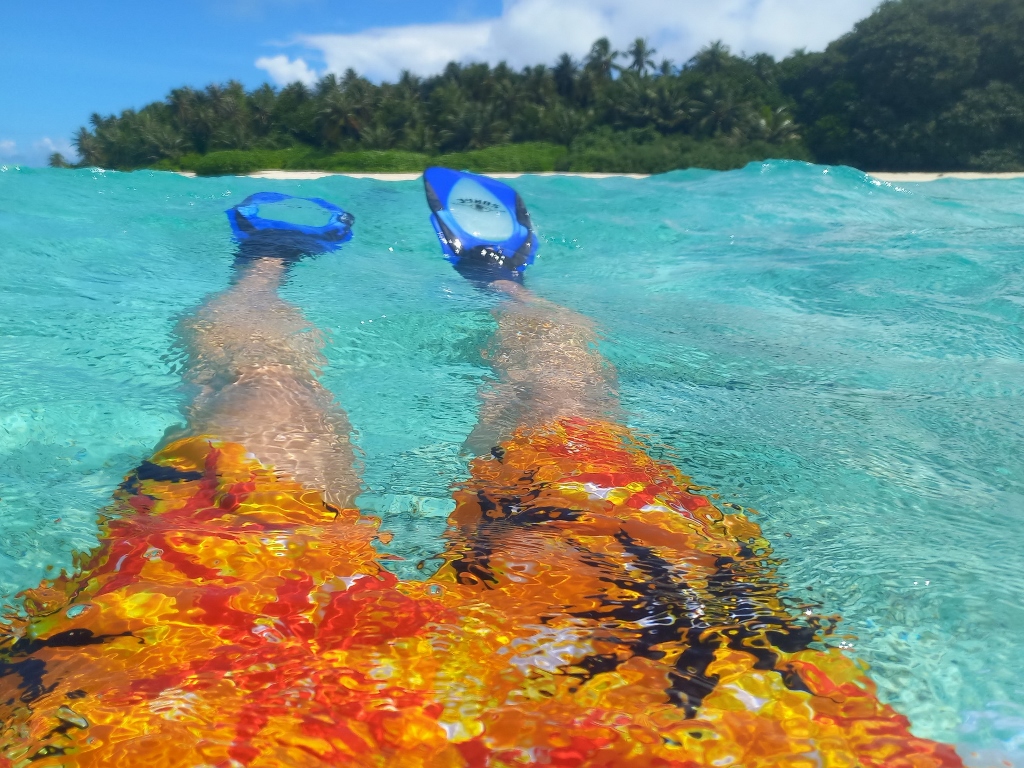 Enjoying by Biyadhoo island
Enjoying by Biyadhoo island
Then I changed my position and I looked underwater again. That’s when I came across a cute little fish. I still wasn’t aware that my mobile phone recorded better in video format, so I only captured it in photos, which turned out a bit blurry in the end. But as a souvenir, they're still quite good.
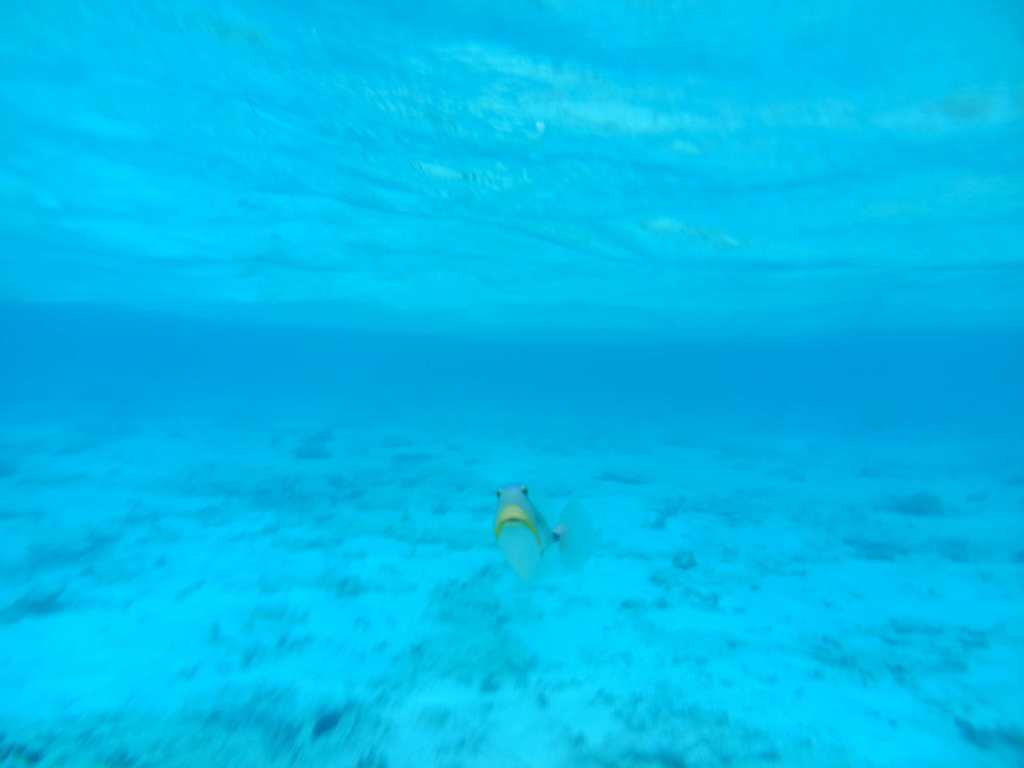 Little fish by Biyadhoo island
Little fish by Biyadhoo island
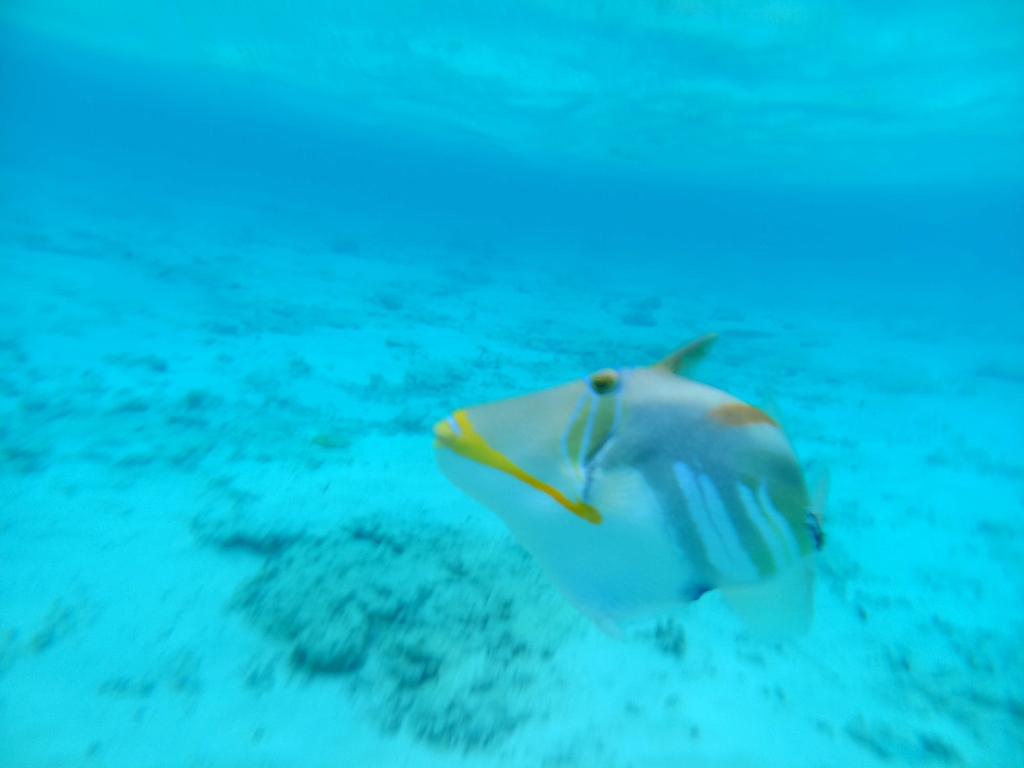 Little fish by Biyadhoo island
Little fish by Biyadhoo island
When I approached the boat, it turned out that the plan was for our guide to take underwater pictures of us there. Like a true professional photographer, he asked us to pose for him with multiple dives by grabbing onto some coral he showed us. Then he captured both photos and videos of us there.
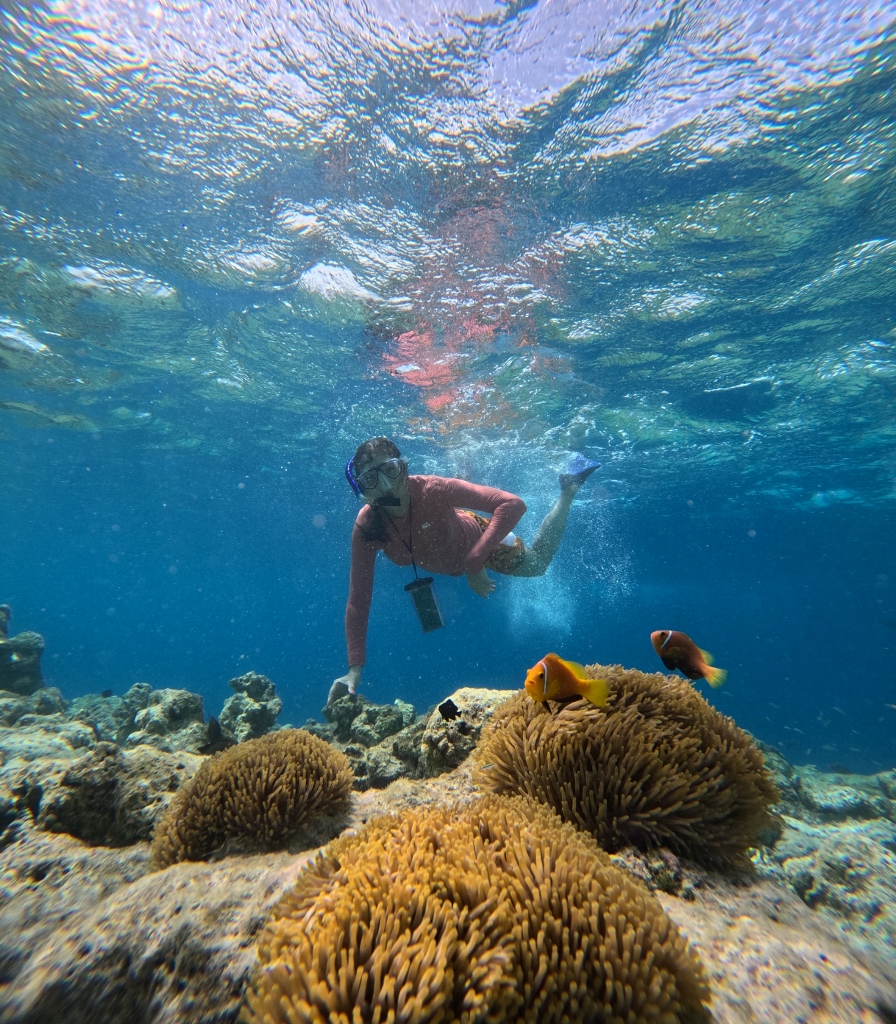 Striking a pose by Biyadhoo island
Striking a pose by Biyadhoo island
After everyone in the group had taken turns posing for the guide, we slowly climbed back onto the boat and the crew members untied it. We were ready to continue with the excursion, while I filmed the island of Biyadhoo once again.
The next destination on our excursion was a place they call the Coral Garden. By the way, on the following map, you can see the marked locations that I visited during this short stay in the Maldives.
As for the Coral Garden, it is a place that I would describe as a very steep underwater hill with a fairly flattened top. It is covered with corals and you can see various small fish there.
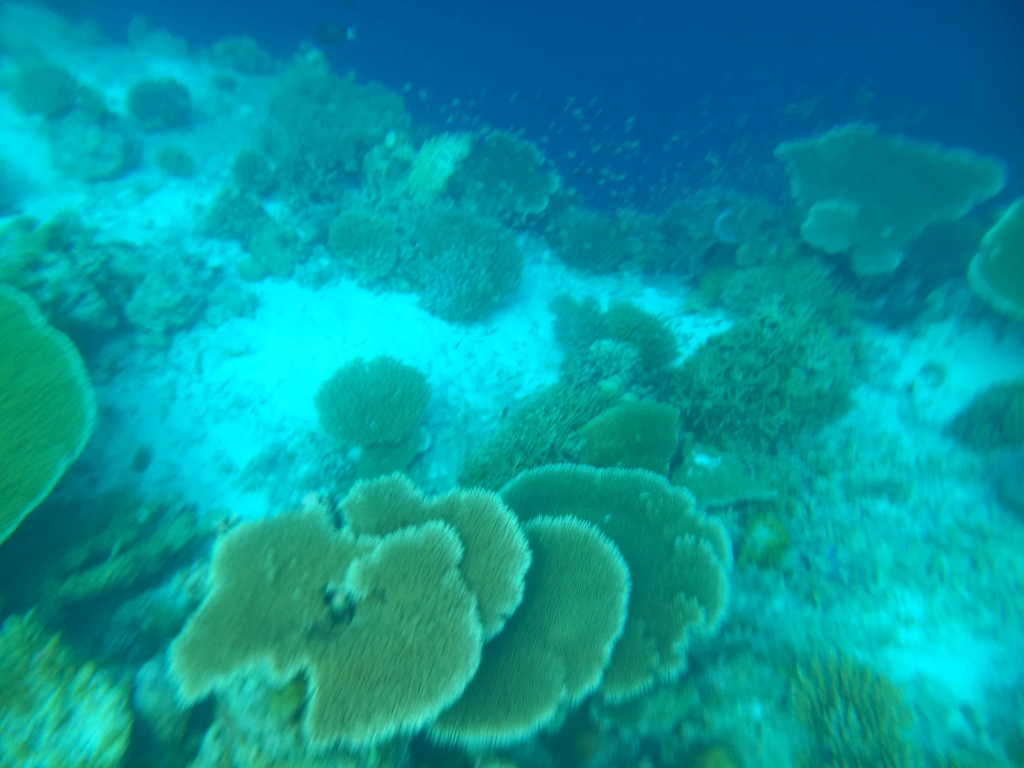 Coral Garden: view from the direction of the top of the “hillock” down the slope
Coral Garden: view from the direction of the top of the “hillock” down the slope
Although it was possible to see a lot of corals, there were also visible remnants of dead ones. I have mentioned before (in my travelogue about Mauritius and also in the first part of my travelogue about the Maldives) that a large number of visitors and motorboats with their noise and spilled oils contribute significantly to the destruction of the underwater world. On the other hand, I myself was one of those visitors, so I don’t really know what to say – on the one hand, I’m extremely sorry that these things are happening, but on the other hand, I want to see the remaining beauty of this marvellous underwater world firsthand.
This internal conflict of mine can be seen in the example of the excursion I went on this day. On the one hand, I did touch coral when having the photos taken at the island of Biyadhoo. On the other hand, I absolutely didn’t step on any coral and was very careful about it. I have to admit that I saw some other people doing it without paying attention to where they were putting their fins.
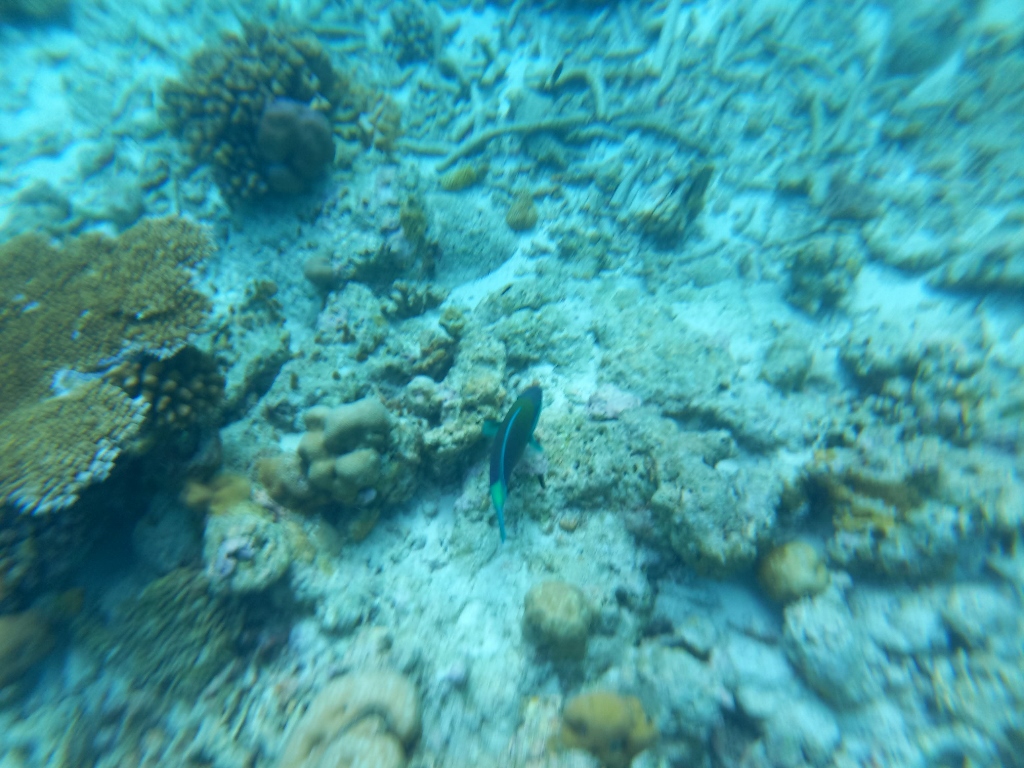 Coral Garden: scattered remains of dead corals
Coral Garden: scattered remains of dead corals
Above the flattened top of the Coral Garden, I could see various fish. I was still struggling a lot with the taking of photos and many of them ended up blurry, while the most successful ones can be seen below. It is clear that I didn't do this very well.
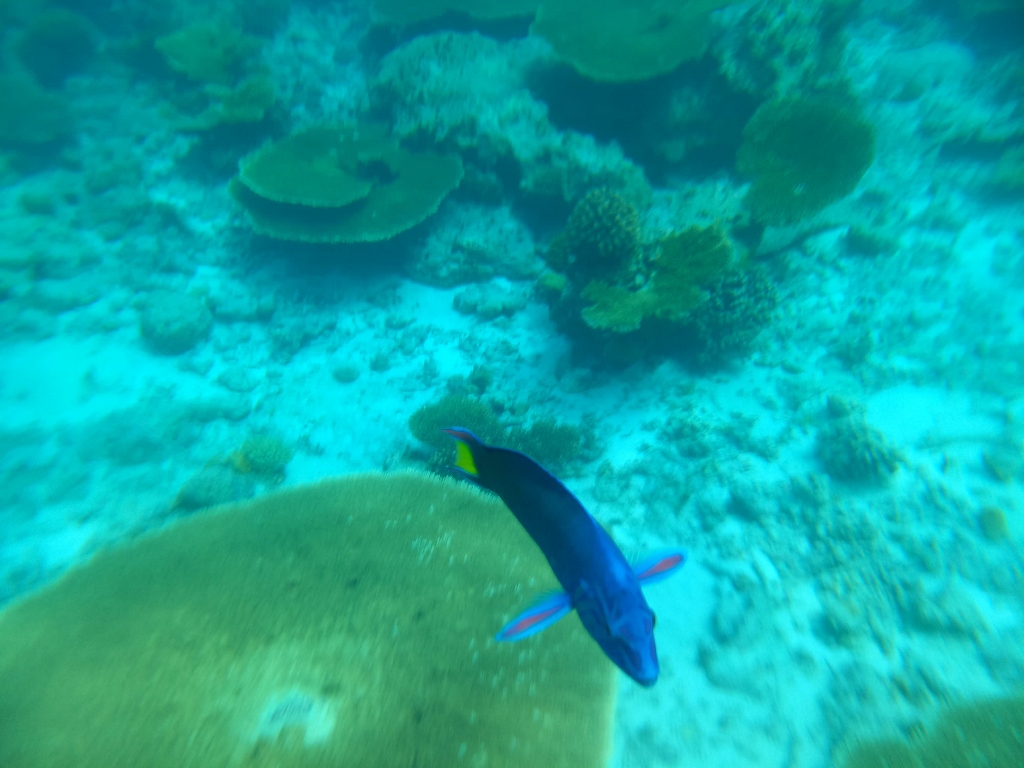 Coral Garden, a detail
Coral Garden, a detail
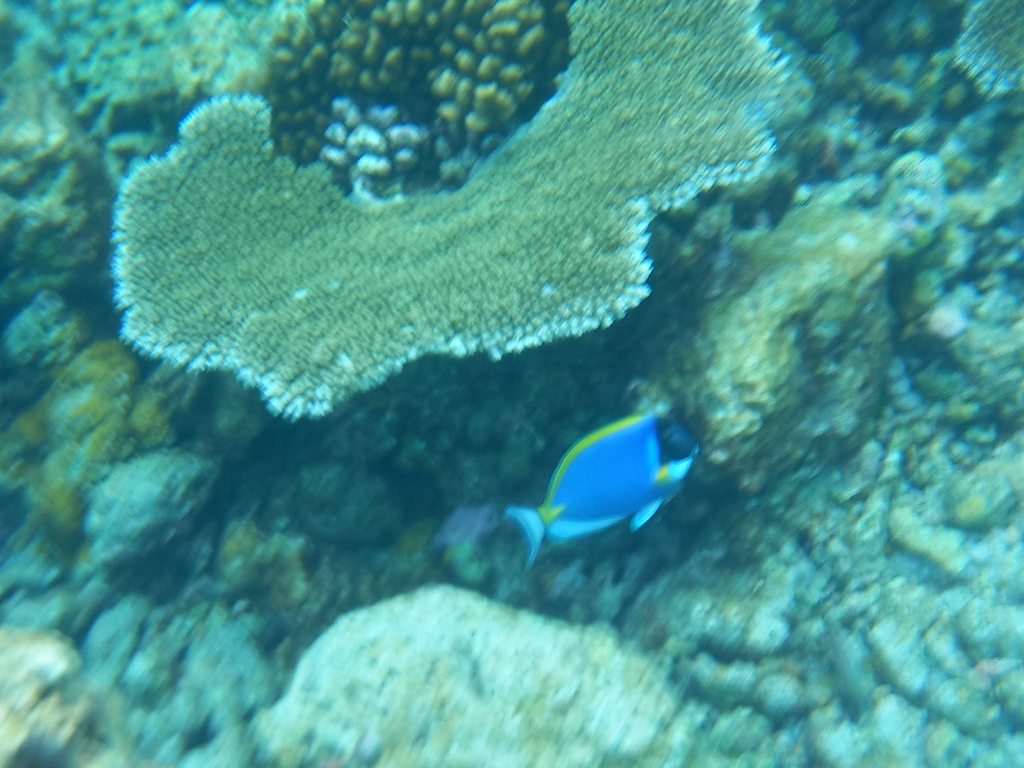 Coral Garden, a detail
Coral Garden, a detail
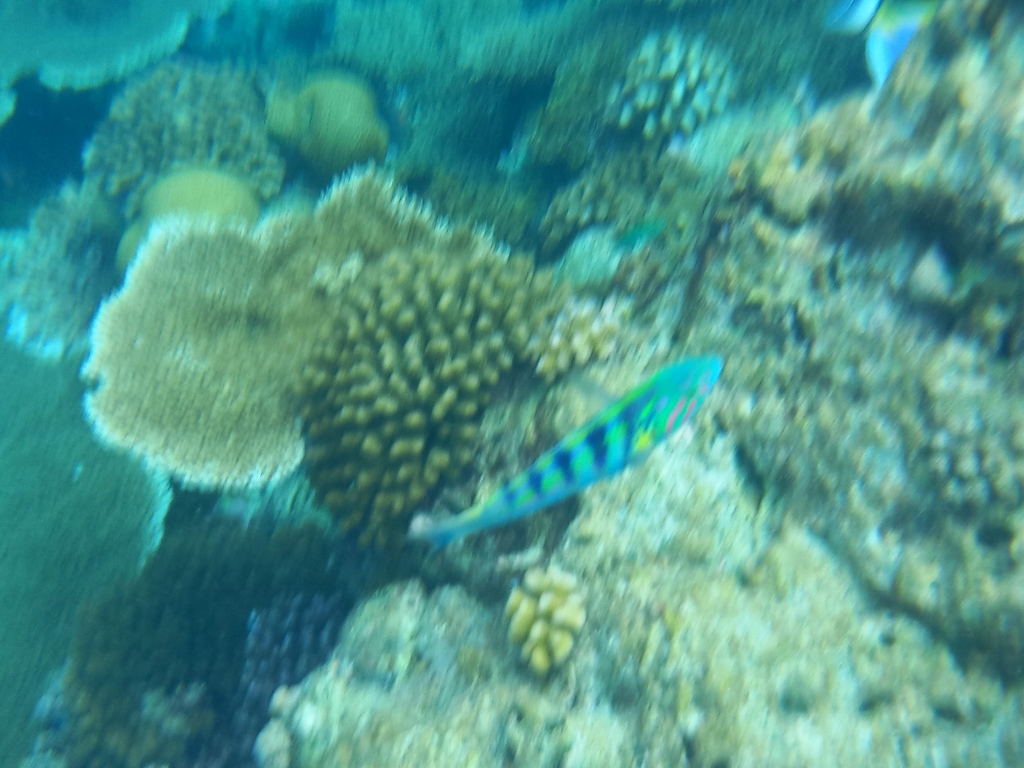 Coral Garden, a detail
Coral Garden, a detail
Here, the plan was also for the guide to take both photos and videos of the people from the group, but it required us to swim to the opposite end of the reef in relation to where we “parked” (again, it was underwater tying, not throwing down anchors).
I’m not sure how local guides choose these spots, but it seems that repeating the dive multiple times increases the chances of successful photographs and videos.
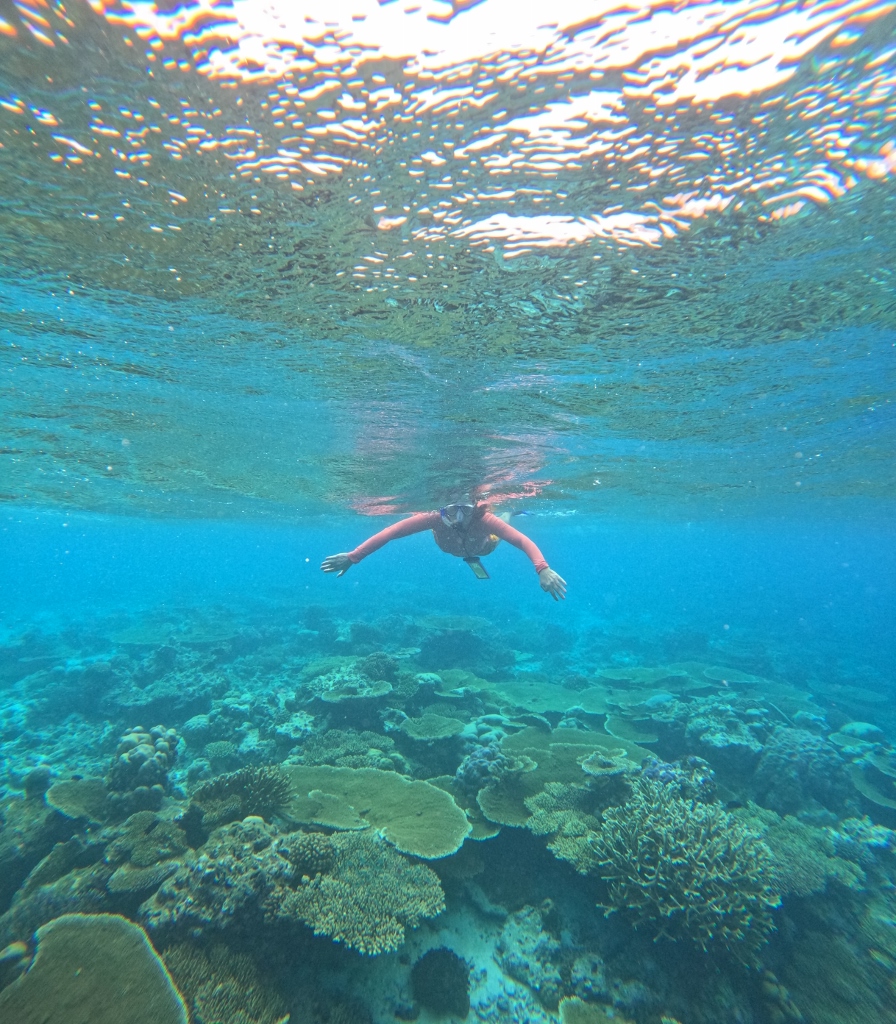 Coral Garden, a detail
Coral Garden, a detail
We all climbed back onto the boat again and then we set off quickly towards the south-western tip of the South Malé Atoll. There, we reached an uninhabited sandy spit called Oe Dhuni Finolhu sandbank.
Here, it was envisaged for us to spend some time swimming, walking and eating fruit that the tour organisers brought for us. I must say that the fruit selection was not exotic at all by my standards. They offered apples, oranges and watermelons. Namely, all fruits are imported, so I suppose this was the simplest option.
 On Oe Dhuni Finolhu sandbank
On Oe Dhuni Finolhu sandbank
The water was extremely inviting, but first I quickly filmed it and then I plunged into the water and swam for a bit. It was absolutely wonderful!
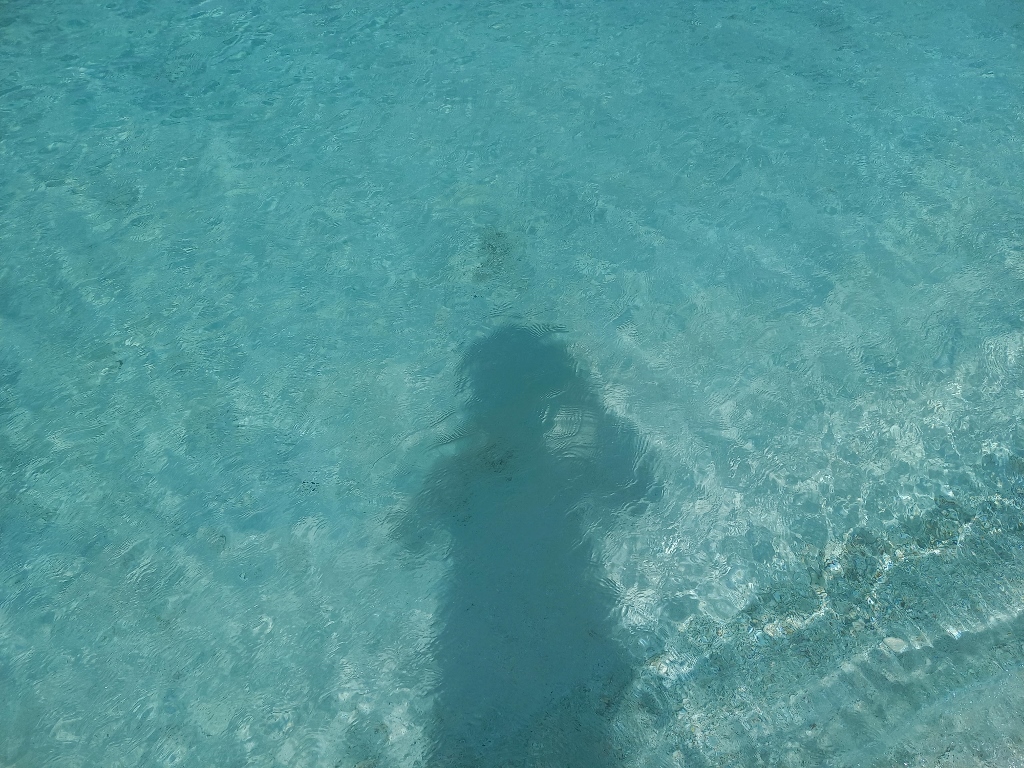 Oe Dhuni Finolhu sandbank, a detail
Oe Dhuni Finolhu sandbank, a detail
Afterwards I walked out to the shore, grabbed some fruit and started walking around the sandbank. Since this was a small place, I quickly made a circle around its shoreline, which is essentially one long beach interrupted only by vegetation in one spot.
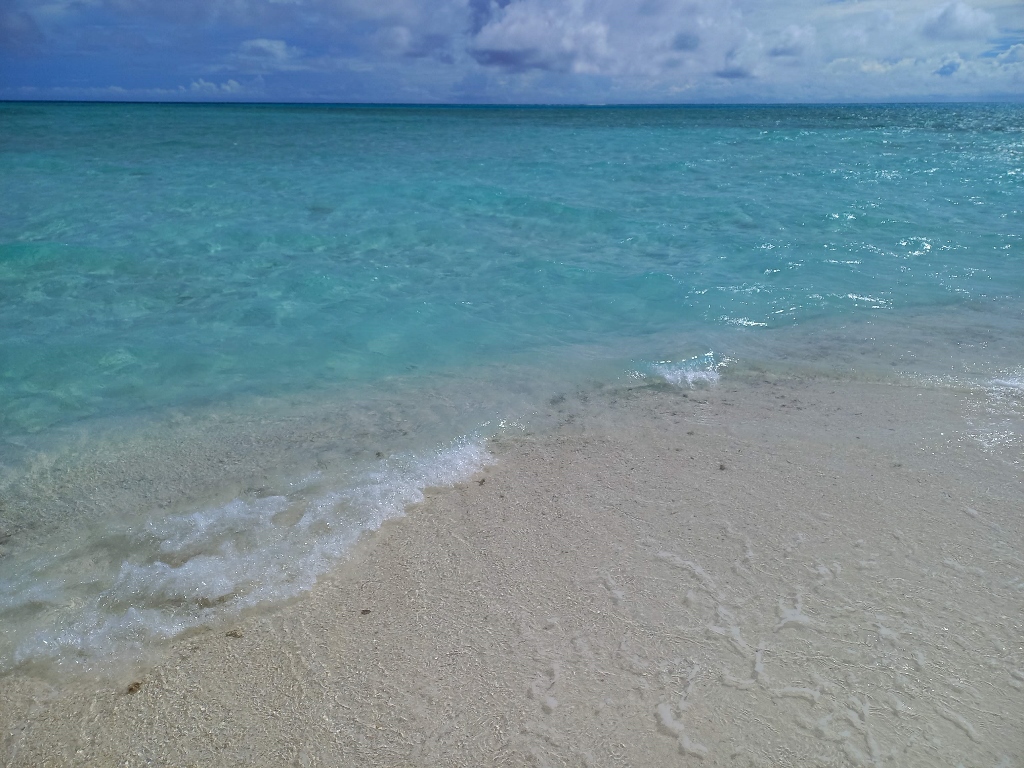 Oe Dhuni Finolhu sandbank, a detail
Oe Dhuni Finolhu sandbank, a detail
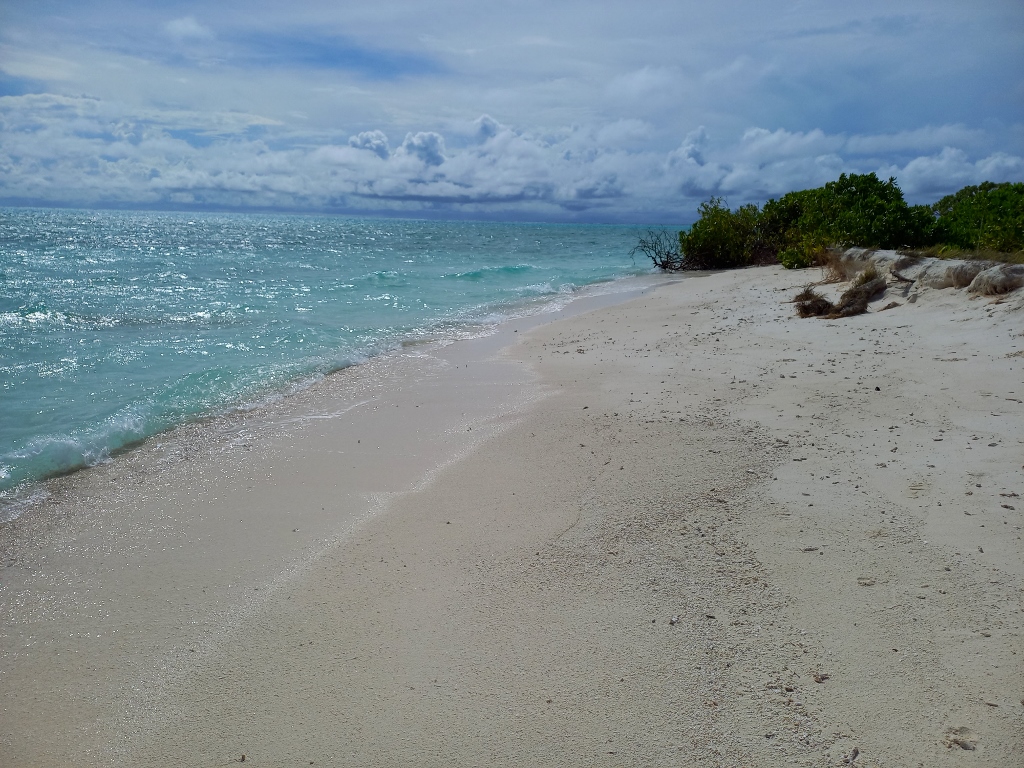 Oe Dhuni Finolhu sandbank, a detail
Oe Dhuni Finolhu sandbank, a detail
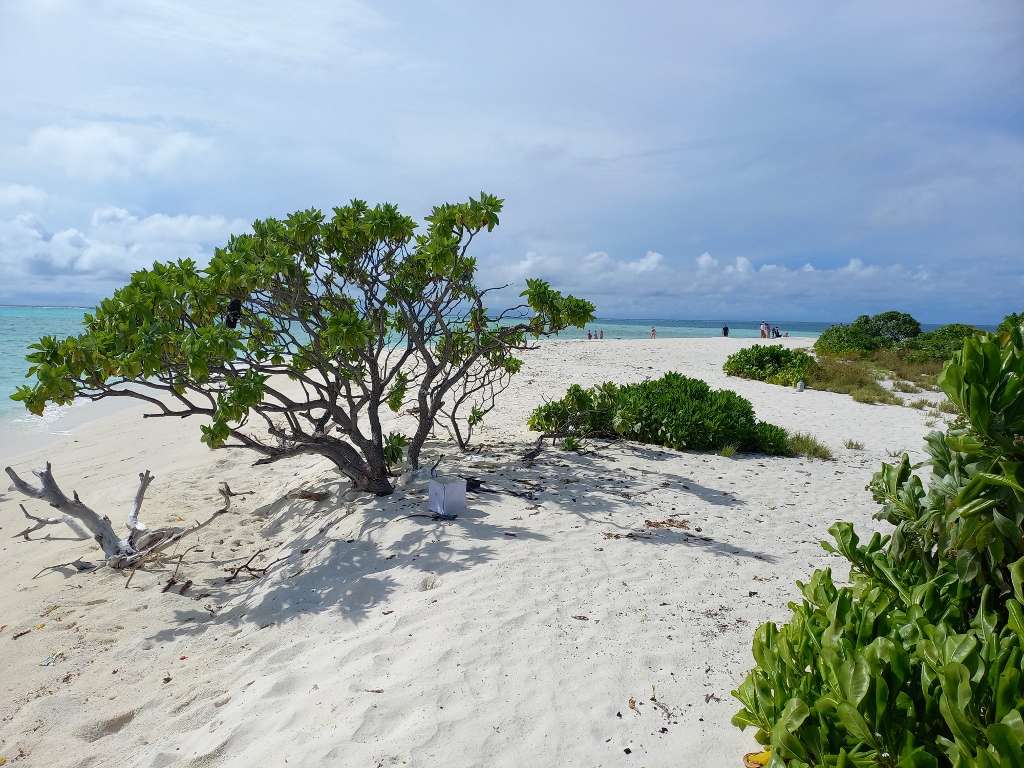 Oe Dhuni Finolhu sandbank, a detail
Oe Dhuni Finolhu sandbank, a detail
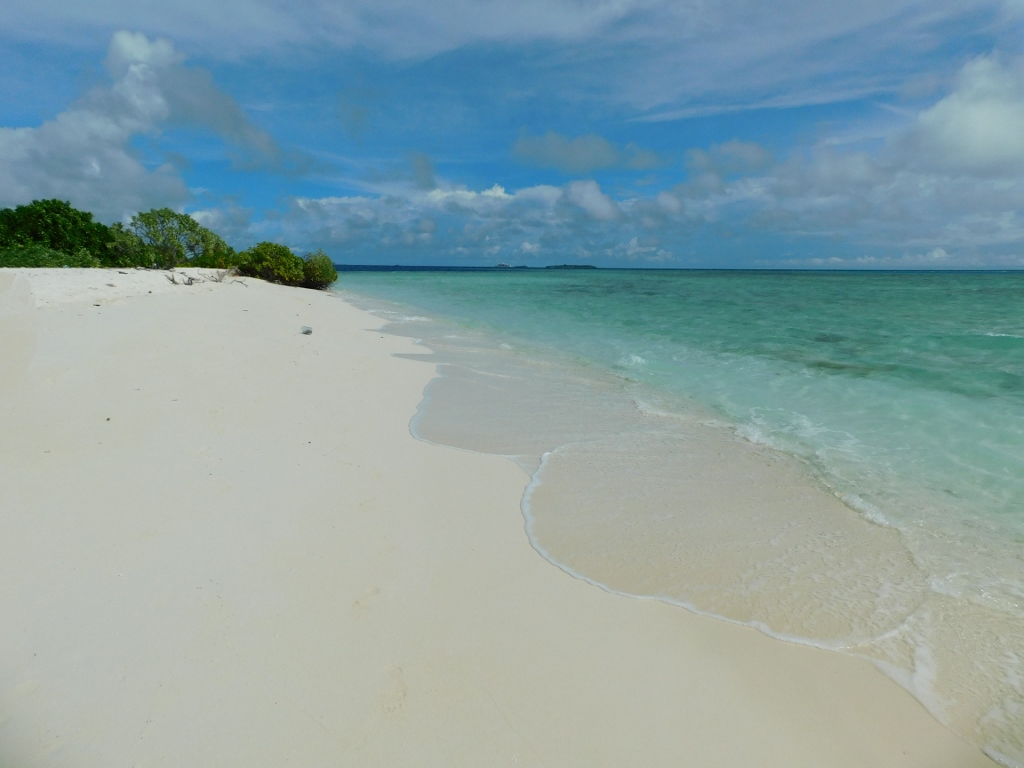 Oe Dhuni Finolhu sandbank, a detail
Oe Dhuni Finolhu sandbank, a detail
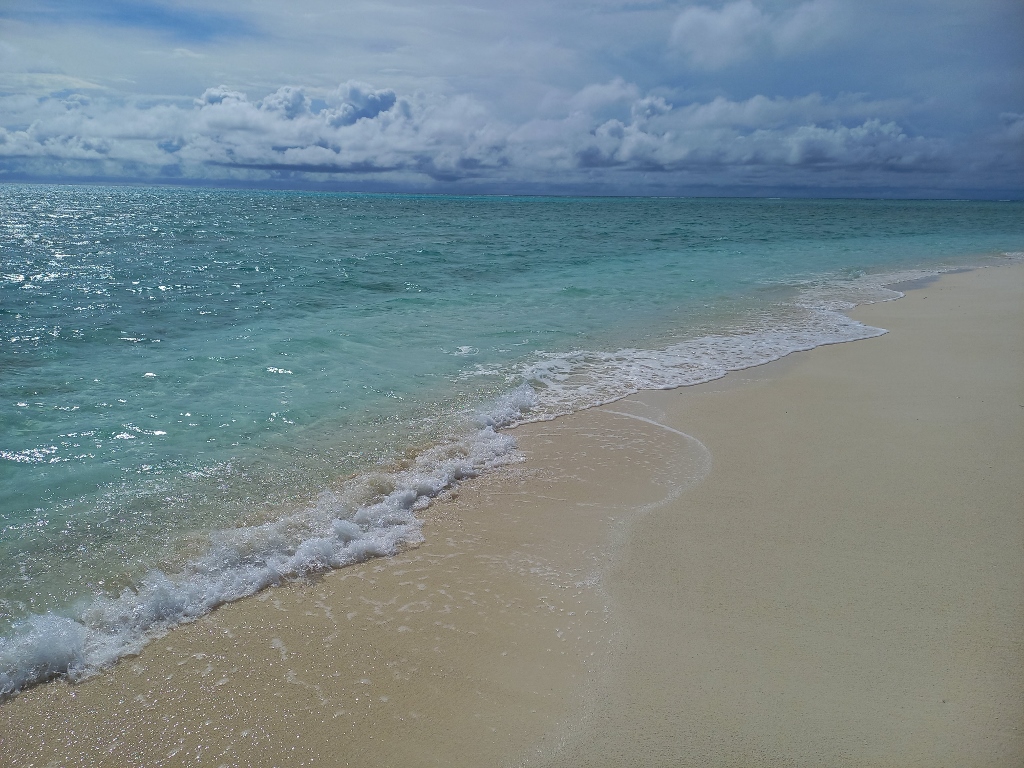 Oe Dhuni Finolhu sandbank, a detail
Oe Dhuni Finolhu sandbank, a detail
Having returned to where I started, I left my camera and mobile phone in a safe place on the shore and then I dashed back into the water for another swim.
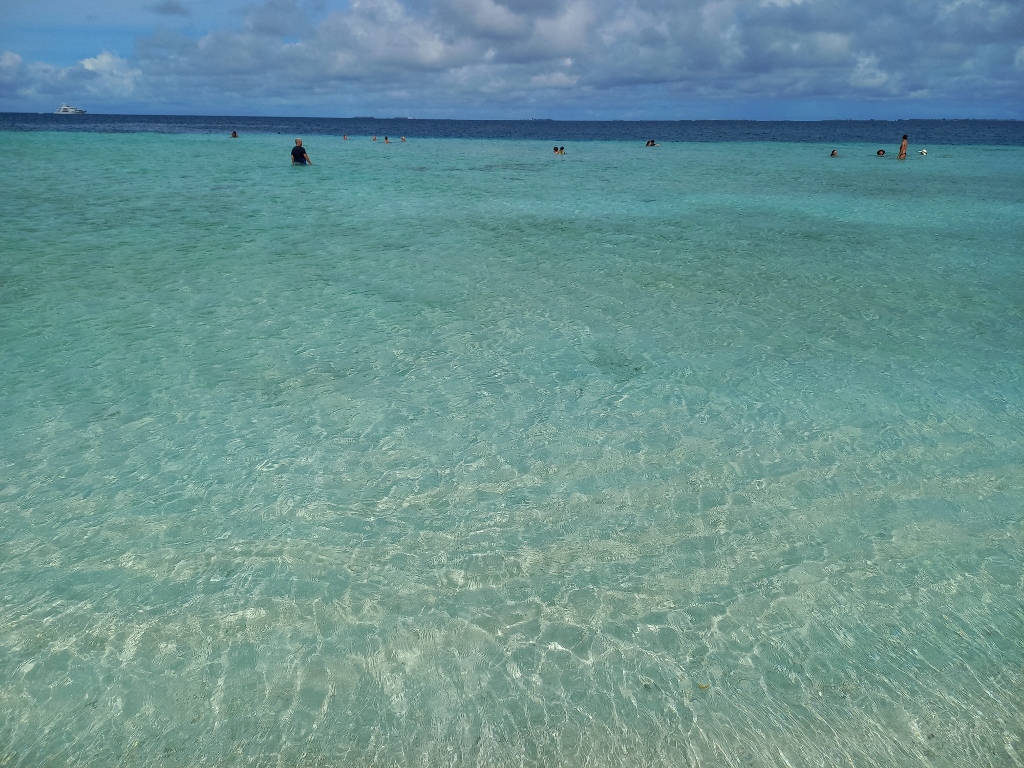 Oe Dhuni Finolhu sandbank, a detail
Oe Dhuni Finolhu sandbank, a detail
After a while, we all boarded the boat again and started heading back to Maafushi. Along the way, naturally, we passed by several islands, often seeing overwater bungalows belonging to various resorts and hotels.
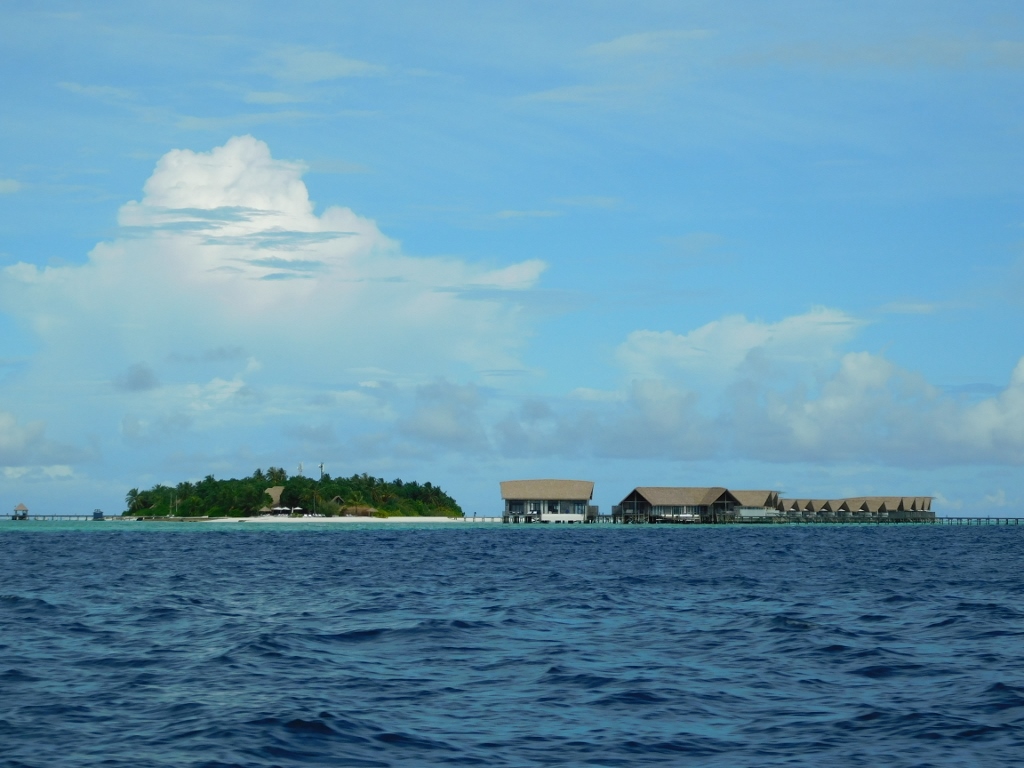 One of the islets and one of the resorts in the Maldives
One of the islets and one of the resorts in the Maldives
In recent years, these overwater bungalows have become a real trend in tropical destinations. However, apart from my issue with noisy music in front of hotel rooms, which surely isn’t a problem with these bungalows, they leave me quite indifferent. They certainly look charming, evoke the exotic and beautiful destination, and generally appear extremely appealing in photographs. But... Personally, when I sleep, I relax quite well and don't pay much attention to my surroundings. If I were to think about it all the time, I wouldn't be able to fall asleep.
It was also interesting that every time we returned from an excursion that took us south of Maafushi Island, on our way back, we would always pass by the prison located on this island. I wondered if the prisoners had their own beach.
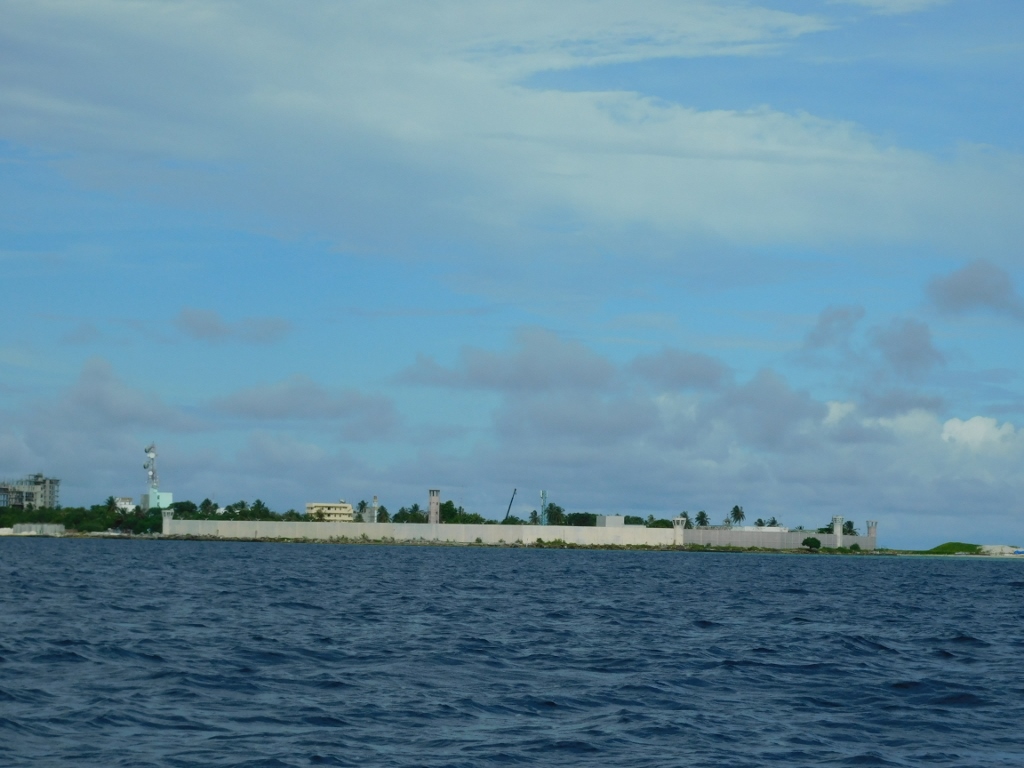 Prison on the island of Maafushi
Prison on the island of Maafushi
The plan for the evening was for all of us to have dinner on the beach together as a group, but this was cancelled because the weather started to deteriorate – the wind picked up, clouds gathered and soon it started to rain.
 Cloudy day on the Maldives
Cloudy day on the Maldives
Nevertheless, the photograph here still doesn't adequately illustrate the situation at this moment, so here's another video clip:
I even managed to spot and take a photo of a grey heron (Ardea cinerea) hunting in the shallows.
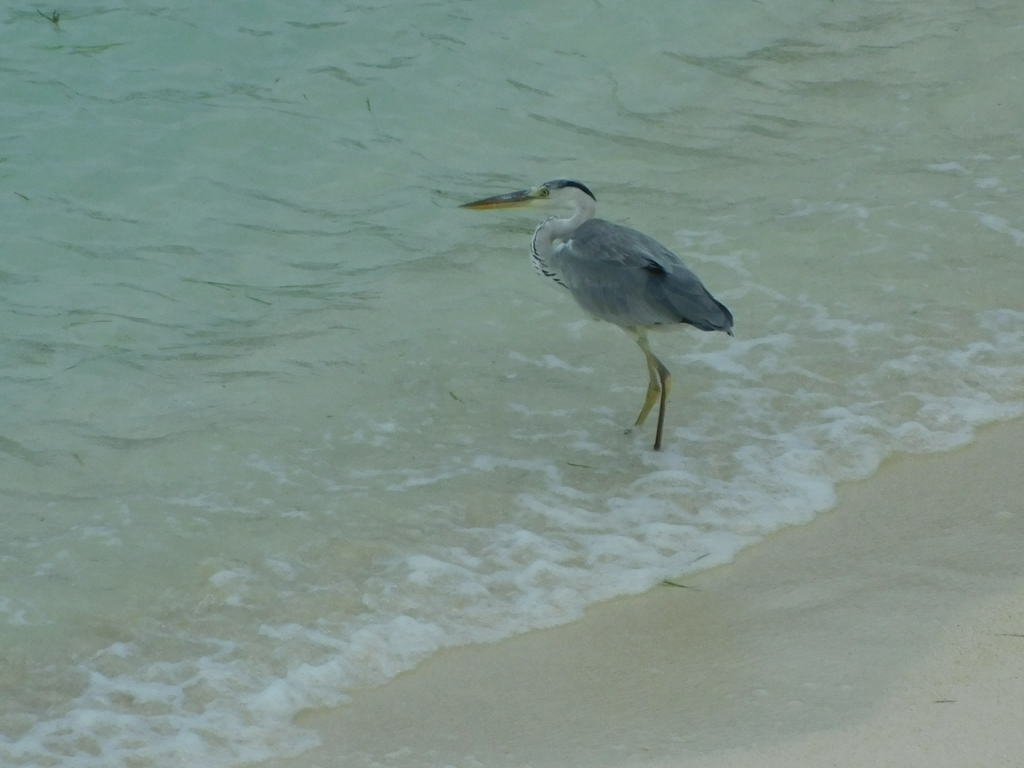 Grey heron
Grey heron
By the evening, everything had somehow calmed down and even the music was noticeably quieter, so I could peacefully go to sleep, with the idea that the next day I would go on a very nice excursion.
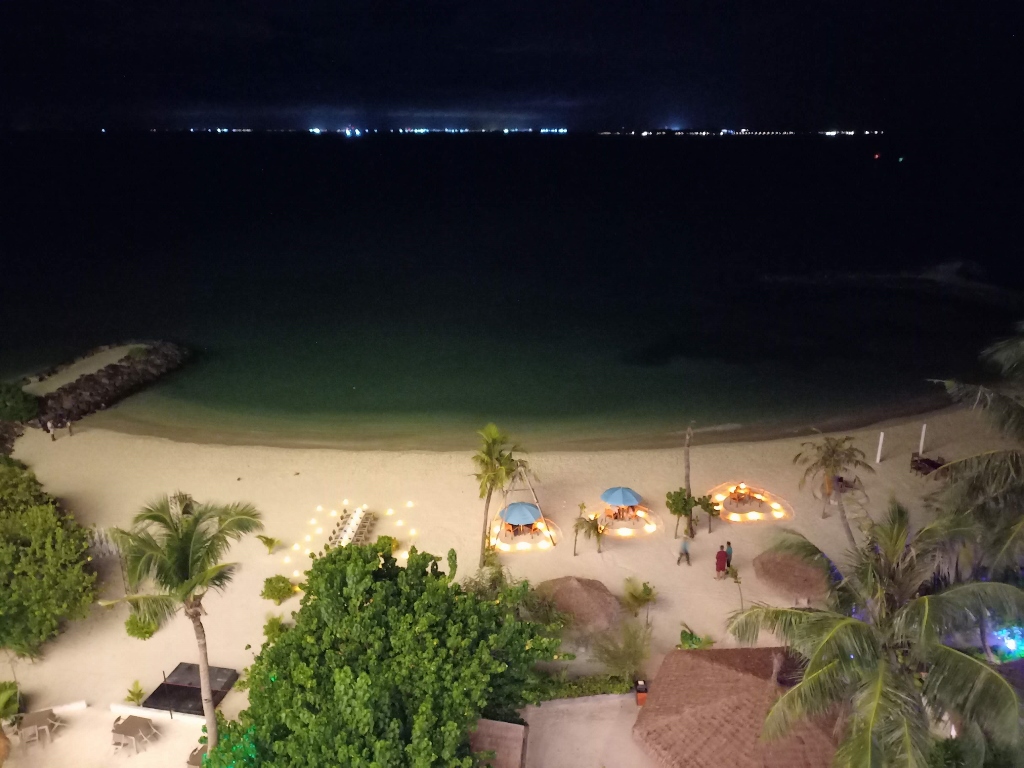 Evening on Maafushi; you can see the lights of Malé in the distance
Evening on Maafushi; you can see the lights of Malé in the distance
However, during the night, I was awakened by a storm. The wind was even stronger and it was raining much more heavily. The situation wasn't any better in the morning, so the excursion was cancelled and I found myself with a free day.
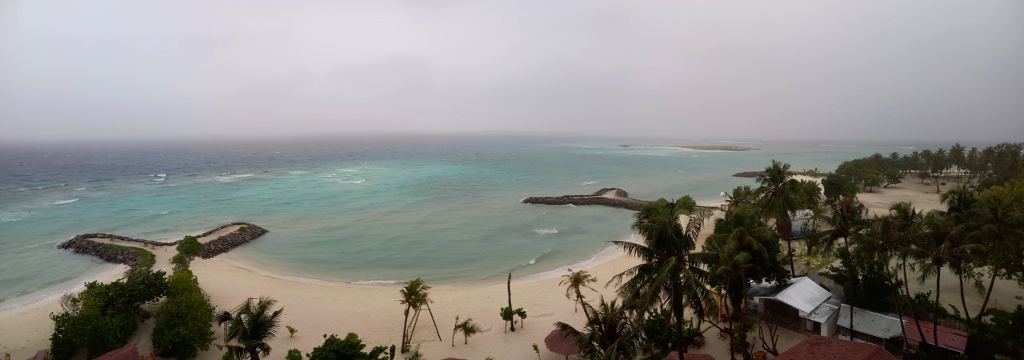 When the wind is strong in the Maldives
When the wind is strong in the Maldives
Well, I was on vacation, so I spent the whole day quite lazily. To start with, I sat with some group members for a while and even ordered a cocktail. Sorry, I meant mocktail, which is a generic term for a mixture of fruit juices and other non-alcoholic beverages, as alcohol is prohibited in the Maldives.
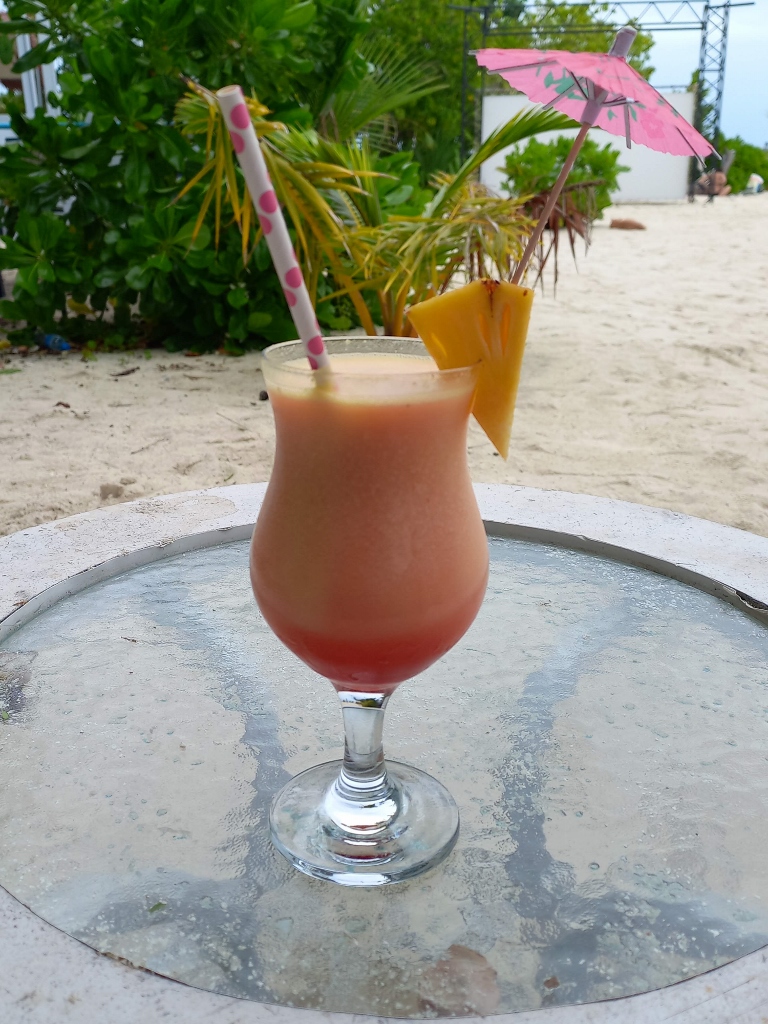 Mocktail in the Maldives
Mocktail in the Maldives
Since I occasionally felt bored, I paid attention to my surroundings and was actually shocked when I saw how the hotel didn't maintain its section of the beach.
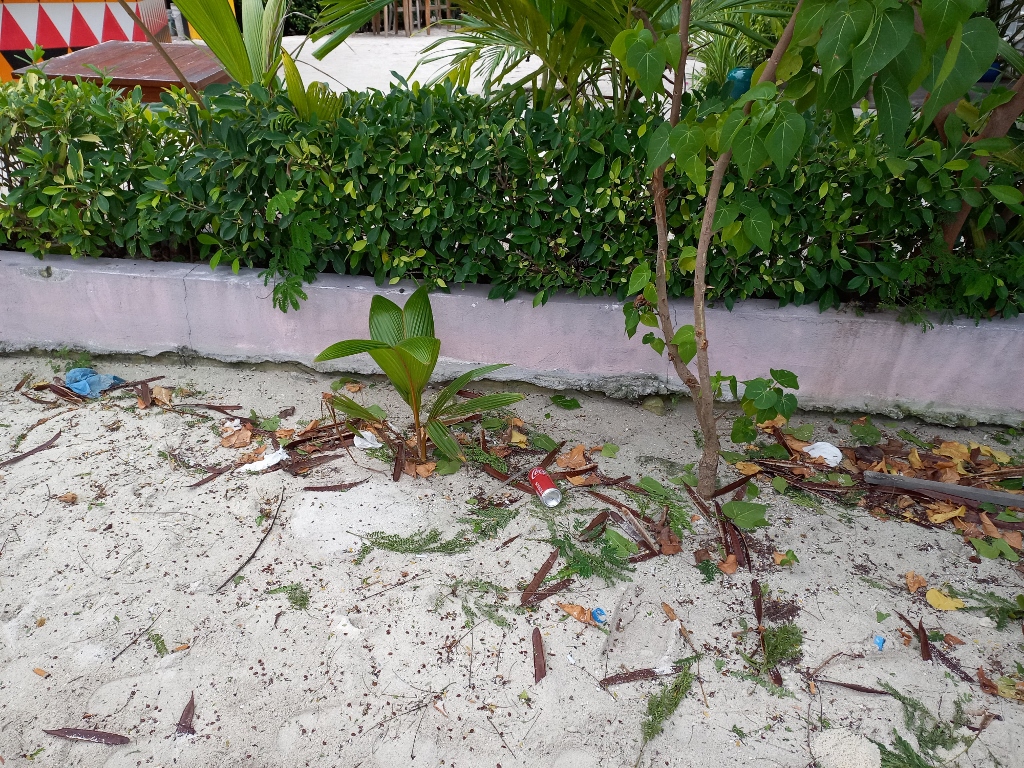 Hotel beach on the island of Maafushi
Hotel beach on the island of Maafushi
Later, I walked to a restaurant and wanted to try different seafood and see how they prepare them here. It wasn't bad, but it wasn't anything special either.
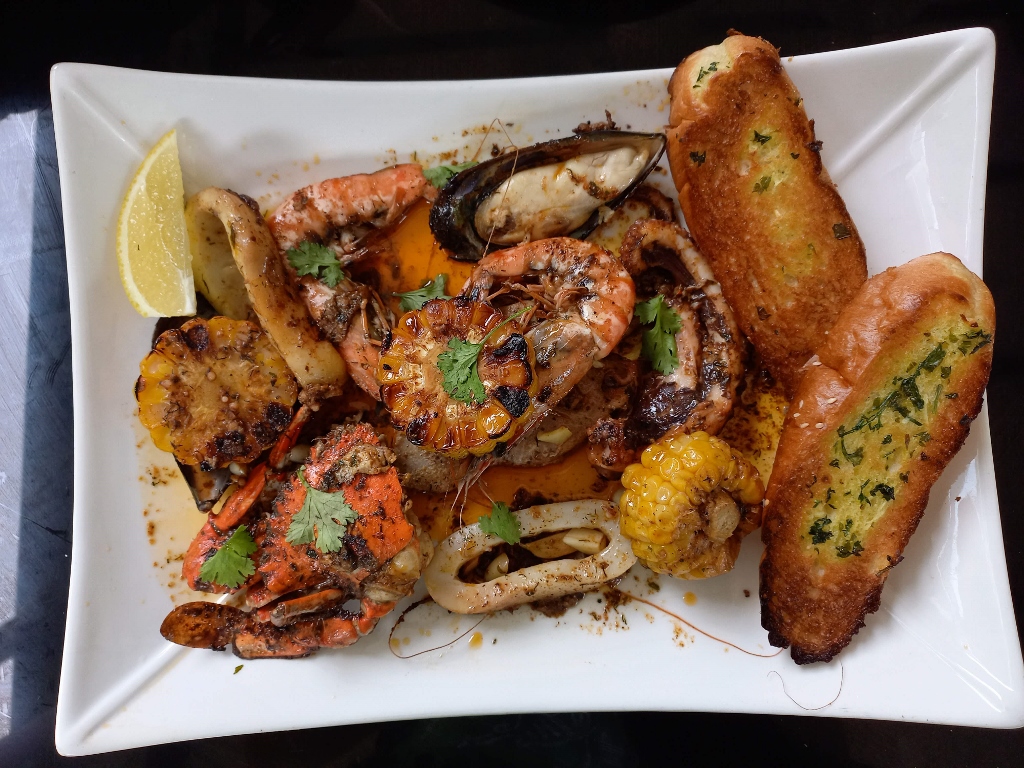 Lunch in the Maldives
Lunch in the Maldives
Along the way, I also ordered freshly squeezed juice, which in this case was a blend of mango and passion fruit. That's always a lovely combination.
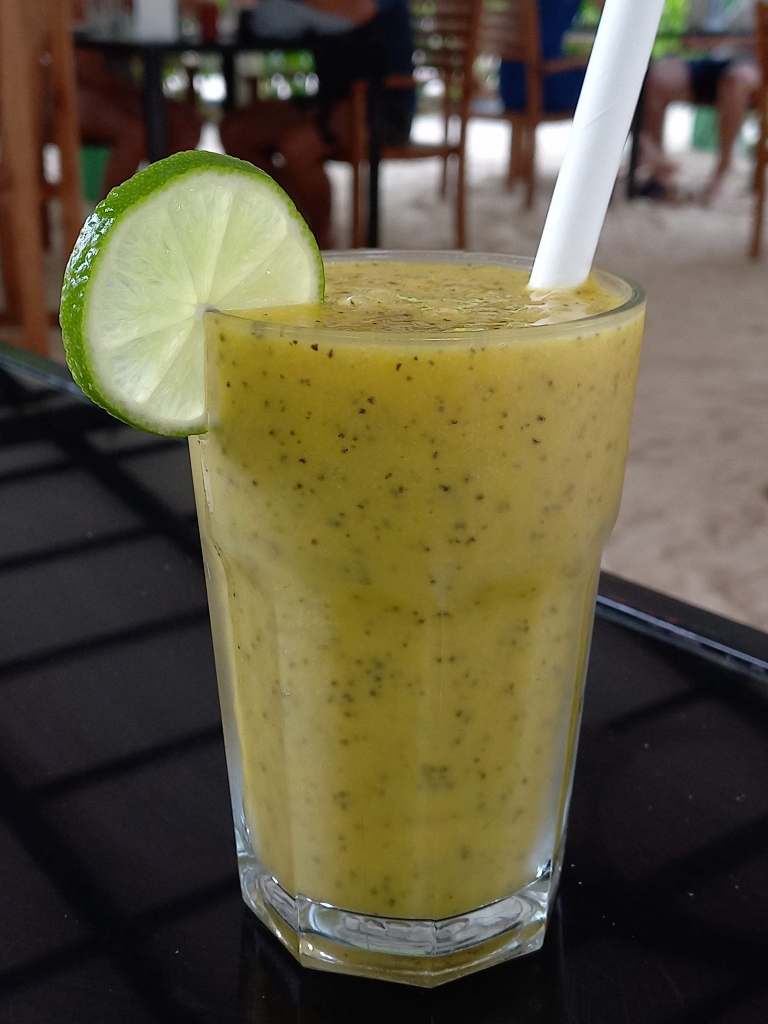 Freshly squeezed juice in the Maldives
Freshly squeezed juice in the Maldives
Although it remained cloudy throughout the day, the rain actually stopped already in the morning and the wind gradually calmed down later in the day, so the beautiful turquoise blue shades started to return.
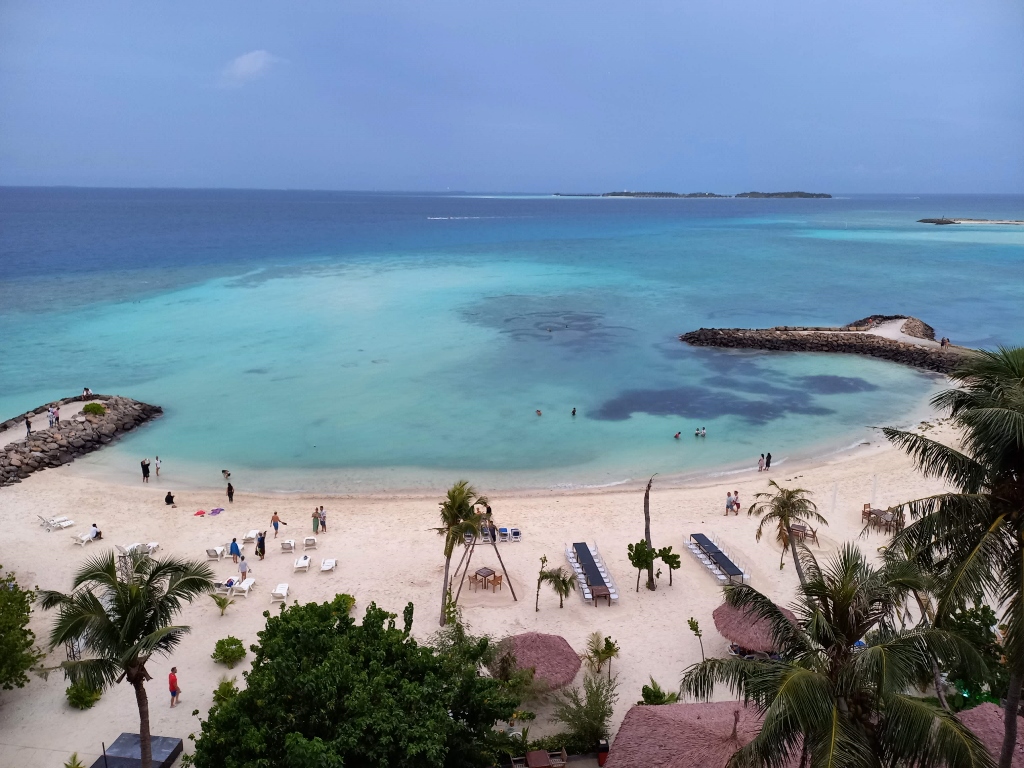 Maldives after rain
Maldives after rain
I went swimming at the hotel beach a few times and in the evening, all of us from the group gathered finally to have the dinner together. It was pleasant and enjoyable, and we also discussed plans for the next days’ excursions.
The following morning, we got together again relatively early in order for those who had signed up to go on another excursion.